Updated November 3, 2012
Public opinion I do believe has motivated a few changes.
Even though Prime Minister Stephen Harper concedes the treatment of Ashley Smith while in custody was “unacceptable,” he says his government is not in a position to interfere with the coroner’s inquest called to look into the New Brunswick teen’s death.
Corrections told to to ‘co-operate fully’ in Ashley Smith inquest at link below
Lawyers for Corrections Canada have told Ashley Smith’s family they are dropping their challenge to the scope of an Ontario coroner’s inquest into the circumstances of her death.
What are Torture methods used on Ashley.
If you take the time to read the articles and watch all the videos
This is what you find. There may be a few missing bit most of it is there.
She was beaten by a guard. Head pounded into the floor.
After someone reported it they too were intimidated, threatened and had their tires slashed. Etc. So not only was Ashley intimidated and threatened, so were people who worked there who wee willing to come forward.
Ashley was-
Intimidated
Shamed, she was stripped naked and left that way for some time.
Shunned, Isolated/Solitary confinement with absolutely little human contact or the lack of anything to do. No mental stimulation makes matters even worse for anyone.
Prisoners who are isolated for prolonged periods of time have been known to experience “depression, despair, anxiety, claustrophobia, hallucinations, problems with impulse control, and/or an impaired ability to think, concentrate, or remember, increased risk of suicide, PTSD, visual and auditory hallucinations ,hypersensitivity to noise and touch, insomnia and paranoia, uncontrollable feelings of rage and fear, distortions of time and perception”
She was in Solitary Confinement for the majority of her stay in all the Prisons.
In rooms with nothing. She was lucky to get a small blanket. She slept on the hard floor. Just a room with a toilet and sink, 4 walls and a video camera.
Pharmacological –She was given drugs against her will.
Ridiculed her- like “Are you dead Yet! Stand out.
Threatened her-“I will Duck tape your face!” as said to her on the Plane while being transferred.
Being pepper sprayed or threatening to do so. Both were done to her.
Being threatened with more drugs shoved into her.
Those are just a few.
Lights were left on 24 hours a day/Sleep deprivation
Being tied up for hours on end in a certain positions- often
Defecting or urinating herself, with no choice and left that way for hours. This happened when in the Wrap as they called it.
Also while being transferred by plane after being Duck taped up, with the 2 spit screens over here head.
There were probably many times she had this happen which have not come to light as of yet.
Being trapped in a room filled with pepper spray with no way out
These are all forms of torture.
Just imagine how you would feel if these thing happened to you..
Number of prisoners harming themselves triples in five years: reports from 2012 check the links Below.
There are more Ashley’s in the prison system it seems. The numbers are growing.
From 2009
By Allison Cross, December 19, 2009
OTTAWA — The number of inmates who died in Canadian jails as a result of homicide, suicide, accident or drug overdose increased this year, as prisoners with mental-health issues continued to be denied the treatment they need, according to a report by Canada’s prison watchdog.
The Government cannot say they do not know, there is a growing problem.
But obviously they can.
Toews ignores facts, evidence
October 26, 2012
A couple of paragraphs from the story
Days before Public Safety Minister Vic Toews told Winnipeg reporters in July that the federal government’s tough-on-crime agenda hadn’t brought on an “influx of new inmates,” he received a report from Canada’s correctional investigator saying the exact opposite.
Not only did the June 26 report by Howard Sapers clearly state “in recent years, corrections has seen significant growth,” but it said that the prison population shot up by 6.8 per cent between March 2010 and March 2012.
————————————————————
A criminal justice system that appears by design to target the mentally ill, racially marginalized and socially disadvantaged is a symptom of a sick society.
Since 36 per cent of those entering prison are identified at admission as requiring some form of psychiatric or psychological care, and 63 per cent are there because of substance abuse, it would seem wiser to expend efforts to deal with those issues before victims are created than to into overcrowded jails people who need help for their illnesses. Read more
The affects of Solitary Confinement
Psychiatric Effects of Solitary Confinement
The Health Effects of Solitary confinement
Solitary would enhance her wanting to harm herself.
Many people cut themselves because it gives them a sense of relief. Some people use cutting as a means to cope with a problem. Some teens say that when they hurt themselves, they are trying to stop feeling lonely, angry, or hopeless. Some teens who hurt themselves have low self-esteem, they may feel unloved by their family and friends, and they may have an eating disorder, an alcohol or drug problem, or may have been victims of abuse.
Teens who hurt themselves often keep their feelings “bottled up” inside and have a hard time letting their feelings show. Some teens who hurt themselves say that feeling the pain provides a sense of relief from intense feelings. Cutting can relieve the tension from bottled up sadness or anxiety. Others hurt themselves in order to “feel.” Often people who hold back strong emotions can begin feeling numb, and cutting can be a way to cope with this because it causes them to feel something. Some teens also may hurt themselves because they want to fit in with others who do it. Source
Self Harm is also a cry for help.
A way to alleviate Psychological pain they feel.
It helps to calm themselves.
Among other things.
They are often victims of abuse.
Research has been done on Self Harming.
Here is one I found and there are probably many many more who have also done research into this problem.
This approach may have been much better, then what they did to Ashley.
Helping Those Who Hurt Themselves
By Tracy Alderman, Ph.D.
The Prevention Researcher,
The year 2000,
If you work with youth, it?s likely that at some point you will come in contact with someone who self-injures. This article is intended to provide some support, advice, and education to those who have students or clients who engage in activities of self-inflicted violence.
What You May Feel
Shock and Denial
Because self-inflicted violence (SIV) is a secretive behavior, it can be shocking to learn that someone you know is a self-injurer. You may not have noticed many of the signs of SIV, such as a refusal to wear shorts or short sleeved shirts, even on the warmest of days. You probably gave no thought to the frequent “accidents” or the numerous bruises and cuts on the arms and legs of a student which were always accounted for by a logical source. Self-inflicted violence lends itself to secrecy quite well ? it usually takes place in isolation and the results can be concealed with relative ease. Also, most people are often eager to ignore or deny many of the tell-tale signs of this behavior. Thus, when you find out about the self-injurious behavior, it is shocking.
Denial is related to the shock. At times, denial is appropriate, useful and necessary. However, with self-inflicted violence denial is detrimental. People who injure themselves are in a great deal of psychological distress. To deny this distress will communicate that you are not interested, not able to help, or do not understand their SIV behaviors. When you are confronted with the self-injurious behaviors it is important you do not deny the reality and implications of the situation. Although this may be difficult, responding to the SIV, rather than denying its existence, is necessary in order to aid those individuals who are injuring themselves.
Anger and Frustration
Anger is a common response when learning of an individual’s self-injurious behaviors. There are many reasons for this. First, anger may stem from the deception which often surrounds SIV. Many individuals who hurt themselves lie about the causes of their injuries. Deception is used as a way of reducing feelings of shame and warding off possible reactions of anger, disgust or rejection from others. However, when the deception is discovered it often produces those very same feared reactions.
Additionally, believing that the self-inflicted violence was not necessary may also anger you. Watching individuals do things to physically damage themselves is frustrating. You may be inclined to scold them or force them to stop hurting themselves. Frustration stems from our inability to control the behaviors of others.
Self-injury, as opposed to many other self-damaging behaviors, usually produces visible, physical evidence. This evidence forces us to realize the extent of our helplessness in changing the individual’s behaviors, causing us frustration and anger.
Empathy, Sympathy and Sadness
Empathy is often a mixed blessing. On the one hand, it allows you to be more helpful while also causing you to feel similar sadness and psychological pain as the individual with whom you are dealing. Individuals who engage in self-inflicted violence experience enormous psychological distress. It is essential to understand the immense nature of this distress providing support and assistance. However, by doing so, you run the risk of allowing that person’s inner world to penetrate you. The result of our inability to remain detached is that you may feel some of their sadness and pain.
We may also feel sad for the individual who is performing self inflicted violence. However, feeling sympathetic towards others, may cause you to see them as figures worthy of our pity. In many ways, this is condescending. While empathy is helpful, sympathy is not. Individuals who hurt themselves may view their SIV as a positive action, an action which helped them to survive. Being sympathetic, you may see their SIV as a negative and pitiful behavior, an act of desperation. Thus, sympathy is not a particularly useful.
Guilt
Self inflicted violence often provokes feelings of guilt for those who are close to the individuals performing these behaviors. You may feel as if you did something wrong which caused this person to self-injure. Perhaps you may think you weren’t the best teacher, parent, or friend. Guilt can be a useful emotion, but in the case of SIV, it is often not appropriate, necessary, or useful.
It is more helpful to surpass these feelings and focus your energy in a more positive and useful direction. Talk with the self injuring student and find out how you can be helpful at this point in time. Wallowing in your own guilt will keep you immobilized instead of becoming an active and helpful participant.
What You May Think
A variety of thoughts commonly accompany the knowledge that someone you know is performing SIV. Some of the more common are:
* It’s all my fault.
* I can fix this.
* You’re nuts!
* This changes our whole relationship.
* You’re not who I thought you were.
* You’re doing this to manipulate me.
Considered objectively, many or all of these thoughts are erroneous and could easily negatively influence your feelings. It is important to be aware of your thoughts so you can prevent them from influencing negative emotional responses which could damage your relationship with the self injurer.
What to Do and Not Do
We don’t like to see others in pain. It is almost instinctual that we try to end another’s misery. When we see students or clients injuring themselves, we begin to understand the enormity of their psychological pain and it is only natural that we want to help. However, without the proper education and training, helping could do more damage than good. This section will provide some ideas of what you should and should not do when trying to assist those individuals who are injuring themselves.
Talk About Self Inflicted Violence
As mentioned previously, SIV is surrounded by shame and secrecy. SIV exists whether you talk about it or not. Ignoring something does not make it disappear. The same is true with self inflicted violence: it will not go away by pretending it does not exist.
Avoiding SIV has several negative effects. First, it reinforces and strengthens the feelings of shame attached to this behavior. Individuals engaging in SIV may get the idea that the behavior is so shameful that even talking about it is taboo. Thus, the secrecy and feelings of shame surrounding self inflicted violence are strengthened.
When communication is decreased, feelings of isolation and alienation, the same feelings which often precede an act of self injury, are increased. Not talking about SIV, may actually increase the likelihood that the self-injurer will hurt themselves again. Silence makes a very powerful statement.
Talking about self inflicted violence is essential. Openly discussing SIV helps those who are hurting themselves. By addressing the issues of self injury you remove the secrecy which surrounds it and reduce the shame attached. You are encouraging a connection between you and the self injurer. The mere fact that you are willing to discuss SIV helps to create change.
You may not know what to say to the individual who is performing acts of SIV. Fortunately, you don’t have to know exactly what to say. By acknowledging that you want to talk, even though you’re not sure how to proceed, you are opening the channels of communication.
Here are some questions you might want to use to facilitate the discussion.
* How long have you been hurting yourself?
* Why do you hurt yourself?
* How do you hurt yourself?
* When and where do you usually injure yourself?
* How often do you injure yourself?
* How did you learn to hurt yourself?
* What is it like for you to talk with me about hurting yourself?
* Does it hurt when you injure yourself?
* How open are you about your self injurious behaviors?
* Do you want to change your SIV behaviors?
* How can I help you with your SIV?
It is necessary to talk about SIV so that the person who is engaging in these activities feels more supported, less isolated, and more connected. Simply talking about SIV will help to decrease the individual’s need for self injurious behaviors.
Be Supportive
Talking is one way to provide support, however, there are numerous other ways to show your support to another. One of the best ways to determine how you can best offer support is to directly ask the self-injurer how you might be helpful. In doing so, you might find that your idea of support is vastly different from how others view it. Knowing what kind, and when to offer support, is necessary.
A key component in being supportive is to keep your negative reactions to yourself. This is not to say that you should not, or will not, have judgments or negative reactions to SIV. However, you must conceal these beliefs and feelings while you are being supportive. Later, when you are not offering assistance, you may release and express these thoughts and emotions.
Be Available
Most individuals who injure themselves, will not do so in the presence of others. Therefore, the more you are with those individuals who hurt themselves, the less opportunity they will have to inflict self harm. By offering your company and your support, you are actively decreasing the likelihood of SIV.
Many people who hurt themselves have difficulty recognizing or stating their own needs. Therefore, it is helpful for you offer the ways in which you are willing to help. This will allow your students to know when and in what ways they are able to rely on you.
Don’t Discourage Self Injury
Typically, when we are told that we can’t or shouldn’t engage in a given behavior, it is for a good reason. However, these reasons take on much more meaning and relevance if they are self-determined. The consequences of our behaviors help us to determine what we should or should not do. Rules, should?s, shouldn’ts, dos and don’ts, limit us and restrict our freedom. When we maintain the right to choose, our choices are much more powerful and effective.
It is both aversive and condescending to tell an individual to not self-injure. As mentioned previously, SIV is a method of coping, and it is often used as a final attempt to relieve emotional distress. Most individuals would choose to not hurt themselves if they could. Although SIV produces feelings of shame, secrecy, guilt and isolation, it continues to be utilized as a method of coping. Because some individuals engage in self injurious behaviors despite the many negative effects is a clear indication of the necessity of this action to their survival.
When you tell someone to stop something, you are inserting a barrier to communication. This barrier will likely increase the secrecy around self inflicted violence. Even a casual comment indicating that your students should stop hurting themselves, runs the risk of damaging the communication and relationship which exists between you. Self-injurers will continue to injure themselves as long as they need to. Your directives will not change this. However, the amount of secrecy and shame experienced because of these actions might change significantly.
Additionally, some individuals who injure themselves may have an adverse reaction to your demand of cessation. By imposing your limits on others, you are creating an atmosphere for failure. Thus, in order to feel control, some who self injure will increase their SIV behaviors in order to feel as if they have choice and control over these actions.
Although it may be incredibly difficult to witness someone’s fresh wounds, it is important that you offer support, and not limits, to that individual.
Recognize the Severity of the Person’s Distress
Most people don’t self injure because they are curious about what it would be like to hurt themselves. Instead, most SIV is the result of high levels of emotional distress with few available means to cope. Although it may be difficult for you to recognize and tolerate, it is important to realize the extreme level of emotional pain individuals experience surrounding SIV activities.
Open wounds are a fairly direct expression of emotional pain. One of the reasons why individuals injure themselves is so that they transform internal pain into something more tangible, external and treatable. The wound becomes a symbol of both intense suffering and of survival. It is important to acknowledge the messages sent by these scars and injuries. An ability to understand the severity of the self-injurer?s distress and empathize appropriately will enhance your communication and connection. Do not be afraid to raise the subject of emotional pain. Allow the youth to speak about his/her inner turmoil rather than express it through self-damaging methods.
Get Help For Your Own Reactions
At some point in our lives, most of us have had the experience of feeling distressed by our reactions to someone else’s behavior. Al Anon and similar self help groups were created to help the friends and families of individuals dealing with problems of addiction and similar behaviors. At this point in time no such organizations exist for those coping with SIV behaviors. However, the basic premise upon which these groups were designed clearly applies to the issue of self inflicted violence. Sometimes the behavior of others affects us in such a profound manner that we need help in dealing with our reactions.
Entering psychotherapy to deal with your responses to SIV is one such way to handle the reactions which you may find to be overwhelming or disturbing. You may also ask friends or colleagues for support or speak with a religious counselor.
In conclusion, dealing with those who self injure can be tremendously difficult. Your own reactions and responses can make all the difference in helping those who are hurting themselves. Remember, you don’t need to be perfect ? you just need to be willing to learn, grow, and be honest with yourself and those who you’re helping. Source
There is a lot of information on how to deal with these types of behavior other then what was done to Ashley.
There are no excuses that are acceptable from Doctors, Guards or the Government.
The treatment of Ashely is unforgivable considering all the knowledge available to all concerned.
I have not found any reports about further trials, other then the one for throwing the crab apples. How did a 1 month sentence get turned into years in a prison and death of young woman?
Are those in the prison system Judge, Jury and Crown Attorney.
As I said I have not found any information on any further trials. What happened to innocent until proven guilty and the right to stand before a court to plead your case? It seems that is thrown out the window when you enter the Prison system.
Who decided that Ashley must stay in prison?
She should have been released after 1 month. Not kept there for years.
Have Canadian prison become like Guantanamo Bay in Cuba? There are a few similarities unfortunately. Well if it walks like a duck, talks like a duck, looks like a duck and acts like a duck. It’s probably a duck.
So many questions and so few answers.
Here is another Report from Fifth Estate on Ashely
Fifth Estate Out of Control
This one I moved up so they are together.
Behind the Wall: the fifth estate’s award-winning doc on the Ashley Smith case
Both are well done and extremely informative.
The other 3 videos are below in the October 31 Update
Updated October 31, 3012
Link to some videos released below. Both are must watch videos. They wore gas mask. Full body Armour etc.
In and out of youth jail since she was 14 for disturbing the peace in her Moncton neighbourhood — playing chicken in the streets with traffic, pulling fire alarms, making harassing telephone calls and breaching probation —She also threw crab apples at a postman and stole a CD.
There may be a couple of other things I missed, but she was not a hardened criminal, by any scene of the word.
She may have been a bit of a problem child, but she did not deserve to die the way she did. There is certainly a lot that needs to be brought to the forefront. She wasn’t even, what I would call a criminal, just a kid who needed direction. I have come across a few teens who have done many of the same things. They were not really all that bad either.
At New Brunswick Youth Centre in Miramichi — where she served two-thirds of her sentence in solitary confinement and was sometimes restrained in shackles or a full-body “cocoon” topped off with a hockey helmet in case she toppled over or tried to bite someone — staff levelled more than 500 “institutional” charges against her.
She was transferred 17 times, to different prisons, in 4 different provinces. This 19-year-old woman’s entire time in federal custody; 11 months spent shuttled from one solitary confinement cell to another across the country.
Being in Solitary confinement in of itself, could drive a person insane.
Being out of the province away from her family could also cause a lot of torment to her. She must have been horridly lonely.
Videos show ‘dehumanizing’ treatment of teen Ashley Smith
Corrections Canada had tried to stop videos from being made public
CBC News
Oct 31, 2012
Related Stories
- Ashley Smith inquest to see treatment videos
- Feds take Ashley Smith ‘death video’ ruling to court
- Ashley Smith family lawyer alleges ‘coverup’ of videos
Videos of teenager Ashley Smith taken in the months before she died in a prison cell show the teen was subjected to “degrading and dehumanizing” treatment, her family’s lawyer told a coroner’s hearing in Toronto Wednesday.
Julian Falconer led the hearing through the video clips shot prior to Oct. 19, 2007, the day the New Brunswick teen died from strangulation after tying ligatures to her neck in her cell at Grand Valley Institution for Women in Kitchener, Ont.
Corrections Canada had gone to court to try to block the videos from being made public, but lost the case. Falconer is now fighting to have the videos played in front of a coroner’s jury.
“To people who think this can’t happen in Canada to a mentally ill 19-year-old, you know a picture speaks a thousand words. I’m embarrassed to be Canadian when I look at that video,” the lawyer said outside the hearing.
In one of the videos, the 19-year-old is seen on an RCMP plane being transferred from a correctional service psychiatric facility in Saskatchewan to one in Quebec.
Smith is wearing two mesh hoods to stop her from spitting.
The RCMP co-pilot can be seen duct-taping her hands together and then to her seat. He then threatens to duct-tape Smith’s face if she does not behave.
“This is how the [correctional service] does business in transferring a victim,” Falconer said.
Another video shows Smith tied to a gurney at Joliette Prison in Quebec after she tried to cut herself in her cell. She is surrounded by corrections officers in full riot gear, including shields.
One of the officers places a shield on Smith’s torso while a nurse injects her with a tranquillizer, described by Falconer as a “chemical restraint.” She received five more injections over the next nine hours, the hearing was told.
Another video taken on July 26, 2007, shows half a dozen guards in riot gear entering Smith’s cell at 5:32 a.m. and telling her she had to have two injections in preparation for a transfer to another facility. Smith objects mildly but, surrounded by the guards, she presents her arm for the shots.
Falconer said a correctional service inquiry board had determined Smith agreed to the shots of her “own free will and without force being used.” Falconer pointed out that a psychiatrist had only recommended drugs be administered to Smith if required and said the “abuse” of the rules contributed to her death.
Smith was first incarcerated at the age of 15 for throwing crab apples at a postal worker.
She racked up six years worth of additional time behind bars for infractions while in youth custody — so many that she eventually ended up serving time in the federal adult prison system.
During the year she spent in federal custody, Smith was transferred 17 times between nine institutions in five provinces.
The correctional service is arguing that presiding coroner Dr. John Carlisle has no jurisdiction to investigate how Smith was treated in prisons in other provinces and that the videos should not be shown to the jury.
The agency is fighting to narrow the scope of the inquest into Smith’s death, claiming the coroner has no jurisdiction to delve into the federal prison system.
Falconer called the position absurd.
“Don’t let them get away with it,” he told Carlisle.
“If you mistreat someone often enough, surely that will affect how they behave.”
Focus of inquest questioned
Carlisle wants a broadly focused inquest that looks, among other things, into how the teenager was treated after repeated episodes of self-harm.
Lawyers for the correctional service and three Ontario doctors involved in Smith’s treatment argued Carlisle’s approach oversteps his legal and constitutional authority.
“This has become an investigation into how [Corrections Canada] treated Ms. Smith, and not an investigation into her death,” correctional service lawyer Nancy Noble said.
Carlisle wants to turn the inquest “into full-blown inquiry into operations and management of [Corrections Canada],” she said.
The agency wants the inquest limited to Smith’s time at Grand Valley Institution, said Lori Pothier, a spokeswoman for Corrections Canada.
The hearing was adjourned until Nov. 13.
The coroner’s inquest is set to officially start with a jury in January.
You must see them to believe it.
For the Videos go HERE and HERE
On April, 12, 2007, the Regional Psychiatric Centre in Saskatoon prepared to transfer Smith following an alleged assault by a staff supervisor. A staff member reported seeing the supervisor strike Smith’s head against the floor.
Falconer described the decision to transfer her out of the facility where she had been receiving mental health care a “breach of trust.”
“You’re beaten and the way to deal with it is to ship the victim out. . . . This is how Correctional Service Canada does business.”
At 6:27 p.m., Smith boarded the plane en route to Institut Philippe-Pinel, a psychiatric centre in Montreal.
Surveillance video shows guards putting two mesh-and-canvas “spit hoods” on her head — a penal garment used to deal with troublesome inmates.
Smith, though, appears relaxed.
“Make a knot,” a female guard said, instructing a colleague on how to fasten the two hoods around Smith’s neck.
“Does that work?” one guard asked?
“It’s going to work,” another replied.
“We’ll have to cut it after.”
She asks guards to use the washroom, promising to not remove the hood.
Her pleas are ignored.
“You stay calm for a little while and then maybe we’ll talk,” a female guard tells Smith.
“Trust me, I am calm,” Smith says.
She begs guards to stop pushing on her left hand, which looks red and bloated.
“I think she took a dump . . . it smells,” a male guard says.
“That’s great,” another replies.
At 6:33 p.m., the plane’s co-pilot emerges from the cockpit in dark sunglasses; a reel of duct tape in his hand.
“First, tape the two wrists together and then after strap (inaudible) legs,” he says.
“Owwww!” Smith screams, her entire body jerking as the co-pilot works the tape around her arms like a lasso.
“Don’t bite me,” he tells Smith.
Her mouth is concealed behind the black veil; there is not a tooth in sight.
“I’m not!” Smith says.
“It will get worse if you do,” he says.
“How can it get worse?” Smith asks.
“I’ll duct-tape your face,” he replies.
Smith snickers.
“He’s serious,” a female guard says.
On April, 12, 2007, the Regional Psychiatric Centre in Saskatoon prepared to transfer Smith following an alleged assault by a staff supervisor. A staff member reported seeing the supervisor strike Smith’s head against the floor.
Falconer described the decision to transfer her out of the facility where she had been receiving mental health care a “breach of trust.”
“You’re beaten and the way to deal with it is to ship the victim out. . . . This is how Correctional Service Canada does business.”
At 6:27 p.m., Smith boarded the plane en route to Institut Philippe-Pinel, a psychiatric centre in Montreal.
Surveillance video shows guards putting two mesh-and-canvas “spit hoods” on her head — a penal garment used to deal with troublesome inmates.
Smith, though, appears relaxed.
“Make a knot,” a female guard said, instructing a colleague on how to fasten the two hoods around Smith’s neck.
“Does that work?” one guard asked?
“It’s going to work,” another replied.
“We’ll have to cut it after.”
She asks guards to use the washroom, promising to not remove the hood.
Her pleas are ignored.
“You stay calm for a little while and then maybe we’ll talk,” a female guard tells Smith.
“Trust me, I am calm,” Smith says.
She begs guards to stop pushing on her left hand, which looks red and bloated.
“I think she took a dump . . . it smells,” a male guard says.
“That’s great,” another replies.
At 6:33 p.m., the plane’s co-pilot emerges from the cockpit in dark sunglasses; a reel of duct tape in his hand.
“First, tape the two wrists together and then after strap (inaudible) legs,” he says.
“Owwww!” Smith screams, her entire body jerking as the co-pilot works the tape around her arms like a lasso.
“Don’t bite me,” he tells Smith.
Her mouth is concealed behind the black veil; there is not a tooth in sight.
“I’m not!” Smith says.
“It will get worse if you do,” he says.
“How can it get worse?” Smith asks.
“I’ll duct-tape your face,” he replies.
Smith snickers.
“He’s serious,” a female guard says.
and HERE
Smith, who spent 23 hours a day in isolation wearing little more than an asbestos gown, tied a cloth ligature around her neck on Oct. 19, 2007 after telling a guard she had the urge to “tie up” again. Ordered by managers to not intervene so long as Smith appeared to be breathing, seven correctional officers watched as she strangled herself. Sapers issued a report last year, concluding her death was “preventable.”
Videos in Ashley Smith case will not be blocked
Published on Thursday October 25, 2012

THE CANADIAN PRESS An undated family handout photo of Ashley Smith. She died in an isolation cell at the Grand Valley Institution for Women in Kitchener, Ont., in October 2007.
Diana Zlomislic
Staff Reporter
Related Articles
The federal government will not make a last, last-ditch attempt to block graphic prison videos depicting abuses against teen inmate Ashley Smith from being shown at the inquest into her death next week.
The Correctional Service of Canada said it accepts a Divisional Court judge’s ruling on Wednesday dismissing its bid for an emergency stay of the inquest.
A government spokesperson said the prison service is “not only committed to openness and transparency, but the integrity of these proceedings.”
That doesn’t mean the legal battles that have plagued the Smith inquest are over.
Next Wednesday, lawyers will reconvene at coroner’s court in Toronto to argue about the scope of the inquest and the witness list.
Presiding coroner Dr. John Carlisle wants the inquest to examine the 19-year-old woman’s entire time in federal custody; 11 months spent shuttled from one solitary confinement cell to another across the country. She was transferred 17 times before she choked herself to death on Oct. 19, 2007 while a group of guards at Grand Valley Institution in Kitchener, Ont., who were ordered not to intervene unless she stopped breathing, watched.
The coroner, the Smith family and almost every other party with standing at the inquest maintains that the conditions of Smith’s confinement had an impact on her mental state; that her self-harm attempts became more frequent with each transfer.
The inquest’s purpose, to prevent deaths in similar circumstances, cannot be fulfilled, they say, without looking at the entire sequence of events.
But the prison service and a group of doctors who treated Smith in institutions outside of Ontario disagree. They say the coroner’s authority to examine Smith’s life begins and ends in Ontario.
The videos to be played next week offer a glimpse of Smith’s incarcerated life outside of the province. A portion of the footage will show her being duct-taped to the seat of an airplane, forcibly tranquilized, and left lying in a wet gown on a metal gurney for hours without food or water.
This is the second inquest into Smith’s death. The first was derailed after the presiding coroner decided to retire after months of legal wrangling.
“If the Correctional Service wants to be a constructive partner, it would abandon the challenges to the inquest and work with the family to get to the truth,” said lawyer Julian Falconer, representing Smith’s parents who live in Moncton, N.B. Source
They just watched her die. Her death was preventable.
There are a lot of links below. This is a long story and it is far from over.
The first of it all is at the bottom of the page. So for the beginning, go to the bottom and work your way up.
This could happen to anyone. This could happen to your child. We should all be concerned.
Oct 24, 2012
Ashley Smith videos to be shown in court
The inquest into the teen’s death will resume next week with what is expected to be…
Oct 23, 2012
Ashley Smith: Prison videos to be shown in court
“Shocking and disturbing” prison surveillance videos of teenage inmate Ashley Smith…
Oct 16, 2012
Prison service wants Ashley Smith videos kept secret
Federal prison officials are fighting to prevent disturbing videos of teen inmate Ashley Smith duct…
Sep 27, 2012
Doctors fight scope of inquest into Ashley Smith’s death
Doctors who treated a deeply troubled teenager are fighting the scope of a coroner’s inquest into…
Sep 20, 2012
Coroner’s inquest into death of Ashley Smith starts fresh in Toronto
Lawyers submit clients’ applications for standing as inquiry begins anew.
May 09, 2012
Mentally ill female prisoners treated cruelly, inhumanly, report finds
Canada’s treatment of mentally ill female prisoners amounts to “cruel and inhuman..
Jul 19, 2011
Health board criticizes Ashley Smith’s prison treatment before death
A delay-plagued coroner’s inquest into Smith’s death has been put off until September, when it will…
Jun 29, 2011
Embattled Ashley Smith coroner replaced
The embattled coroner at the inquest into the prison death of teen inmate Ashley Smith has been…
Jun 21, 2011
Ashley Smith inquest delayed until September
The high-profile coroner’s inquest into Ashley Smith’s prison death has been delayed once again…
Jun 21, 2011
Star challenges secrecy around teen’s death in jail
The province’s youth ministry and attorney general have deployed an army of lawyers to keep records…
Jun 15, 2011
Ashley Smith inquest may be webcast
Ontario’s chief coroner may webcast an inquest into the death of teen inmate Ashley Smith so the…
Jun 14, 2011
Fifth Estate wins Michener Award for Ashley Smith story
CBC-TV’s investigative program The Fifth Estate has won the 2010 Michener Award for its…
May 30, 2011
Ashley Smith jurors might return June 13
Inquest into teen inmate’s death delayed two weeks, possibly longer, while coroner deliberates…
May 28, 2011
Coroner in Ashley Smith inquest faces barrage of criticism
A bumpy first two weeks at the coroner’s inquest into the death of teen Ashley Smith has some…
May 27, 2012
Ashley Smith inquest delayed
A vague public statement says coroner needs more time to decide contentious issues about release of…
May 25, 2011
Coroner’s decisions under fire at Ashley Smith inquest
A dozen lawyers challenge Dr. Bonita Porter on her order to restrict the public’s access to prison…
May 24, 2011
Ashley Smith inquest: Guards want faces on video blurred
Media lawyers at the Ashley Smith inquest argue that not showing guards’ faces amounts to censoring…
May 19, 2011
Graphic videos show Ashley Smith turning purple in cell
As Ashley Smith’s sentence grew, so did her self-destructive behaviour. The Smith family says her…
May 18, 2011
Ashley Smith guards told ‘If she’s still breathing, don’t enter cell’
The inquest into teen Ashley Smith’s jail death sees the first video of her, shot by guards as they…
May 17, 2011
Ashley Smith charged over 500 times for behaviour in jail, court hears
Guard’s charges, for self-harming, disruptive and violent behaviour in jail, greatly hiked…
May 16, 2011
Prison wants Ashley Smith documents kept secret
The Ashley Smith inquest jury will hear its first witness Tuesday as a detective describes the teen…
May 04, 2011
Exclusive: Ashley Smith’s family settles wrongful death lawsuit
Smith’s family sought $11 million, but the parties would not release details of the settlement…
Apr 27, 2011
Court will not see Ashley Smith tapes
Court ruling on ashley smith tape access.
Apr 18, 2011
Judge weighs release of Ashley Smith prison videos
Superior Court Justice will take week to decide whether prison service should produce controversial…
Apr 15, 2011
Prison chief fights release of Ashley Smith video
Correctional Service of Canada says Ashley Smith’s family is abusing the legal process by demanding…
Mar 31, 2011
Ashley Smith inquest delayed
Jury probing teen’s prison death to hear first witnesses on May 16
Mar 29, 2011
Ashley Smith’s family challenges coroner’s ruling
Ontario Divisional Court to hear arguments on disturbing video evidence in teen inmate’s death
Feb 28, 2011
Ashley Smith jurors barred from stark video
A prison video showing a teen inmate forcefully injected with tranquilizers while strapped to a…
Jan 11, 2011
Ashley Smith inquest delayed until April
More than 100 witnesses are expected to testify at expanded inquest into teen inmate’s death.
Nov 12, 2010
Ashley Smith coroner’s inquest scope expanded
Inquest will probe repeated use of solitary confinement in teen inmate’s death.
Nov 11, 2010
Ashley Smith’s requests for help ignored
Internal prison documents reveal the teen inmate was trying to turn her life around.
Nov 02, 2010
Family calls for RCMP to probe Ashley Smith prison death
Smith’s family wrote two letters in mid-October asking the RCMP to investigate the Correctional…
Sep 06, 2010
Did nine other inmates die like Ashley Smith?
Since Ashley Smith’s death, Canada’s prison watchdog told the Star he has discovered nine similar…
Aug 23, 2010
Ashley Smith’s prison files to be released
The federal prison service has dropped its bid to keep the personal files of a teen inmate who…
Jan 09, 2010
Family boycotts inquest into teen’s death
The family of a teenager who strangled herself in a Kitchener prison cell while seven guards…
Oct 17, 2009
Ashley Smith suicide prompts probe into other prison deaths
The federal prison watchdog is probing two more “troubling” inmate deaths, which he says question…
Not so long ago a women who was pregnant was put in Solitary when she went into labour and had the premature baby, a breach birth, in the cell.
On October 18, Julie Bilotta was reunited with her newborn, whose in an Ottawa jail cell three weeks earlier shocked and angered a city. As Ms. Bilotta laboured, she was ignored and ridiculed by guards. Eventually, she was relegated to solitary confinement where she would birth her baby.
That our justice system failed Ms. Bilotta is beyond debate. The guards at the Ottawa-Carleton Detention Centre (OCDC) were callous and cruel, robbing Ms. Bilotta of the basic dignity all women – innocent, accused or guilty – deserve. Those who ignored her pleas for help deserve whatever comeuppance they receive. That her ordeal will lead to better care for pregnant women at the OCDC is about the only positive aspect that can come out of this ordeal.
Location: Ottawa-Carleton Detention Centre
But for all that Ms. Bilotta endured, there is a second victim: her son. Not only was he given inadequate care as he was being born, he was robbed of the basic essentials of life for his first three weeks out of his mother’s womb. Until October 18, her son was not given the benefit of his mother’s touch or his mother’s milk.
Contact, skin-to-skin contact, is vitally important in establishing the mother-child bond, facilitating breastfeeding and offering the much-needed emotional support every child deserves. For twenty long days, this child was robbed of what most of us were afforded during the beginning of our lives.
We do not know if Ms. Bilotta intended to breastfeed her son, but we do know that any such intent has likely been thwarted by our corrections system. A mother is an automated milk-producing system. The breastfeeding relationship must be cultivated in order to stimulate the supply of the mother’s milk and to ensure that the baby “learns” to suckle.
We also know that human milk is the ideal food for newborns. Both the World Health Organization and the Canadian Pediatric Society recommend exclusive breastfeeding for the first six months of a child’s life. It is further recommended for that breastfeeding continue for at least the first two years of a child’s life. This child has likely been robbed of such a start to life.
The Ministry of Community Safety and Correctional Services needs to fix the problems in Ontario’s detention centres. (Ironically, had Ms. Bilotta been convicted of her alleged crimes and sentenced to prison, she and her baby would have received far better treatment.) The current neglect on display by our government not only unduly punishes people like Ms. Bilotta; it gravely punishes the most innocent among us, newborn babies. Source
The mother and child could have both died. Breach births are very dangerous. No matter what anyone thinks of the mother, she deserved better then what happened to her. Her child absolutely, deserved the best care possible. He committed, no crime whatsoever. o come into the world like that was just unthinkable and certainly not acceptable.
—–
Why Canada’s prisons can’t cope with flood of mentally ill inmates
Kirk Makin
Milton, Ont. — The Globe and Mail
The “headbanger” arrived in a police van and wasted little time in earning his nickname. “He would just dive at walls and doors,” smashing into them head-first, Janet Gauthier recalls.
“It is a very traumatic experience,” she adds. “There are cases here that would confound any psychiatric facility.”
But the Maplehurst Correctional Complex, where Ms. Gauthier is deputy superintendent, is not a psychiatric facility: The young schizophrenic is one of the thousands of mentally ill people flooding Canada’s prisons.
“We try to learn from each one of them,” Ms. Gauthier says, but the central lesson is simply that jail is an abysmal place to stuff the sick and demented.
The ritual is never-ending. Offenders who are often disoriented and babbling are disgorged at prison gates, leaving harried staff to gauge how dangerous they are and place them where they are least likely to run afoul of tougher inmates or try to take their own lives.
The mind-bending isolation of a segregation cell brings no peace to a depressed or unhinged mind. Nor does an environment of slamming cell doors, fear and intimidation. Behind bars, effective treatment is rarely more than a promise while reality is a severe shortage of psychiatric professionals and a patient population so diverse it can explode if different kinds of inmate mix.
The cost to society is immense. After clogging cell blocks for months or years, untreated prisoners often are released only to get into trouble all over again.
Recent figures indicate that nearly 35 per cent of the 13,300 inmates in federal penitentiaries have a mental impairment requiring treatment – triple the estimated total as recently as 2004, and far higher than the incidence of mental illness in the general population.
“The numbers are staggering,” says Correctional Investigator Howard Sapers, whose office oversees the operations of Correctional Services Canada (CSC).
Yet, even as correctional officials appeal for saner strategies, the federal government’s much-publicized policies designed to get tough on crime are pouring thousands of new offenders into prisons that are already perilously overcrowded.
“It is a huge problem,” Mr. Sapers says. “The pressures are going to be even more extreme.”
In a report last fall, Mr. Sapers was unsparing in his criticism of CSC’s long-term strategy for treating the mentally impaired more humanely and effectively. A recent infusion of $50-million represented a once-in-a-generation opportunity to shore up facilities for the mentally ill, but the money was mismanaged and poorly targeted, he wrote.
“Funding is delayed to such an extent that, at this pace, it could easily take decades to fully implement.”
Public Safety Minister Vic Toews, the government’s law-and-order point man, declined to comment on the situation this week, but CSC spokesman Suzanne Leclerc says the new laws will bloat the system with 4,500 new inmates by 2014.
Thus far, the government has committed $600-million to create 2,552 beds to accommodate them, but Mr. Sapers says the new and renovated cells are “based on existing designs that are inadequate. We are not going to see more common space, more therapeutic space or more treatment capacity.”
Jails are hard-wired to mete out punishment, not therapy, so the mentally impaired often go untreated, sometimes languishing in isolatation 23 hours a day.
Some correctional officials concede that the best they can do is limit the damage. “As long as there is a valid court order, we are required to admit them and take care of them,” says Steve Small, assistant deputy minister of correctional and community services for Ontario. “We do our best, but there are certainly other locations that would be preferable for these types of inmates.”
Cells on suicide watch
Less than an hour’s drive west of Toronto, Maplehurst is a sprawling complex guarded by high fences and overhead mesh (designed to foil slingshot delivery of drugs to inmates in the exercise yard) that primarily houses offenders on trial or waiting out adjournments. About 200 of its 1,200 inmates have a serious mental impairment, including schizophrenia, bipolar disorder, brain injuries and the effects of fetal alcohol syndrome. Others suffer from dementia or low intelligence and a lack of coping skills. The most floridly psychotic inmates are kept under suicide watch in bunker-like cells.
Unlike staff at a psychiatric facility, guards have difficulty responding instantly to emergencies – such as a recent case in which a schizophrenic became hysteric in the belief that his cell was crawling with mice and snakes. “Staff knew how terrified he was,” Ms. Gauthier recalls. “The look in their eyes was compassion. But they had to force him back in his cell.”
On a 50-man range reserved for the most severe cases, offenders float quietly between their cells and a narrow corridor with tables bolted to the floor. Like a herd of deer, they appear docile, yet leery; most are heavily medicated.
“I used to say that I had never seen anyone as sick as I had seen in hospital forensic units, but I can’t say that any longer,” Ms. Gauthier remarks. “A psychiatric facility has different equipment, a different model. Correctional centres were never set up to be mental-health centres.”
Guards and nursing staff on the mental-health ranges appear genuinely caring, referring to inmates by name and keeping elaborate charts of any change in behaviour that may point toward a suicide attempt or sudden attack. However, they are not always trained in the finer points of mental illness.
“A schizophrenic may think that a guard is the devil and start calling him really foul names,” Ms. Gauthier says. “If he were a healthy person, he would be up for misconduct. One of the challenges is to understand that this is a symptom of an illness.”
Graham Glancy, a forensic psychiatrist who works three days a week at Maplehurst, sounds like a battlefield medic as he describes what it’s like to process patients in 20-minute intervals all day long: “Basically, it’s a matter of medication and management – and trying to drop one little pearl of wisdom on them.”
Some offenders are violent or hallucinate wildly, but exercise their right to refuse treatment. Staff can try to persuade local hospitals to medicate them involuntarily, Dr. Glancy explains, but getting them there requires diplomacy. “You have to be very careful about it. I can only send one or two at a time, or the hospital can get swamped.”
On another range, 50 inmates with brain damage or subnormal intelligence gaze warily at strangers. All they have in common is the fact that, in prison, they’re highly vulnerable. Some are chronic bedwetters. Others are old, scraggly and demented. Some are hulking men, but behave like school kids.
“The developmentally delayed are the forgotten population,” Ms. Gauthier says. “… It is like putting four-year-olds in custody. They cry all day for their mommies. Social workers give them colouring books and crayons.”
She recalls an inmate who arrived clinging desperately to a Beanie Baby, which prison rules didn’t allow in his cell. “He had never been separated from it. He finally let us take a picture of it so he could hold that.”
How did Canada’s prison system turn into a holding tank for mentally damaged individuals?
Many officials trace it to the deinstitutionalization of psychiatric patients over the past 30 years. Patients wound up on the street when neighbourhoods shunned them and social-service agencies failed to provide adequate housing or care. In many cases, their mental state deteriorated, and they turned to crime, everything from the mundane to murder.
“We see people who … felt there was no other way,” says Mr. Small, the assistant deputy minister. “We also see people with mental-health issues who couldn’t even form the intent to commit a crime.”
Treating mentally damaged offenders can be close to impossible in provincial jails, where inmates are on short court remands or serve sentences of less than two years. Longer federal sentences allow time for treatment, but it’s rarely available.
“There are waiting lists for almost every program at every institution,” says Mr. Sapers, the federal investigator. “Although a program may be advertised as being available at a particular institution, it very likely isn’t. This is where it all falls apart.”
If mentally impaired inmates do not get appropriate treatment, they’re unlikely to qualify for early parole, winding up warehoused until their sentences are almost over. Thus, parole officers have little time to help them return to the community. “This leaves them at a higher risk of reoffending,” Mr. Sapers says. “It is a great irony. The cycle is very counterproductive.”
Correctional officials scramble to link the mentally ill with agencies that can provide beds and medical care after they are released, Mr. Small says. But many offenders have wandered far from home or been abandoned by their families, making it an enormous challenge.
To complicate matters more, ex-convicts with mental problems tend to be shunned even by well-meaning agencies. “Once you have been in jail, you have a stigma,” Ms. Gauthier says. “Those beds are closed off, so we end up having to rely a lot on hostels and transition housing.”
Uncertainty on the horizon
Looking ahead to the spike in the penal population, the correction service says it has no idea how many new inmates will require mental-health care. Ms. Leclerc says her department works hard to meet its legislative mandate “to provide every inmate with essential … services” and “reasonable access” to services that aren’t essential, but “will contribute to the inmate’s rehabilitation and successful reintegration into the community.”
In the past five years, she adds, the $50-million has been spent largely on assessing new inmates and helping offenders after they are released. But Mr. Sapers says that money has done little to make treatment or more suitable accommodation available to most inmates.
He says it is urgent that the federal government work more closely with provincial correctional systems and psychiatric hospitals.
If not, Maplehurst’s Ms. Gauthier adds, people like the headbanger will remain caught in a revolving door between jail and the street. “The primary concern is getting medication and the right treatment,” she says. “There was a day when these offenders all would have been in psychiatric facilities. That day is gone. Now, we have incarceration.”
And what has become of the young schizophrenic?
To prevent further damage, he was placed in a special restraining cot and had to wait in his own private hell until the hospital could be persuaded to medicate him. Returned in a much more placid state, he was able to complete his two-month sentence and then released.
For how long is anyone’s guess. Source
Update December 19 2013
Ashley Smith Death has been ruled a Homicide
Other Canadian problems.
Recent
//
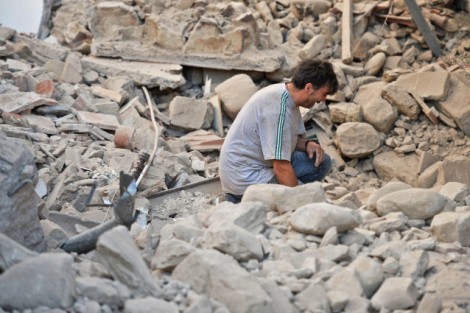
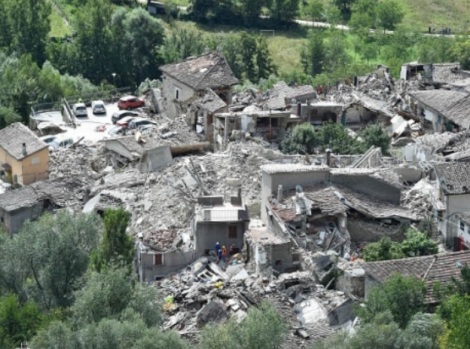
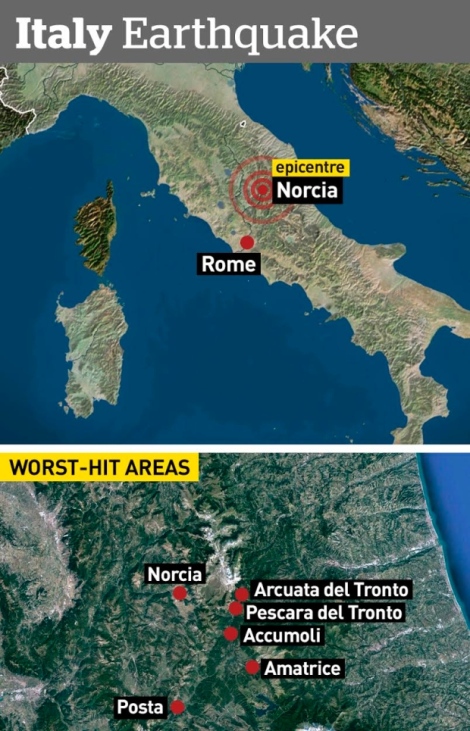





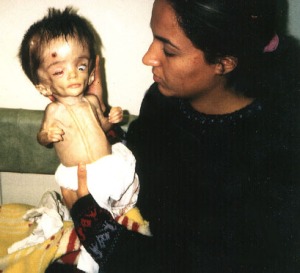
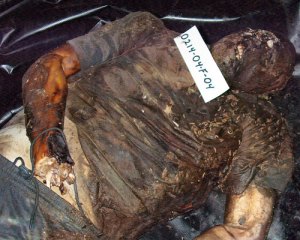
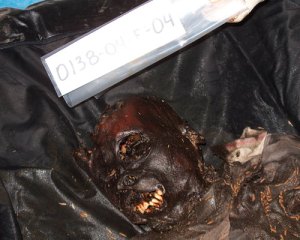
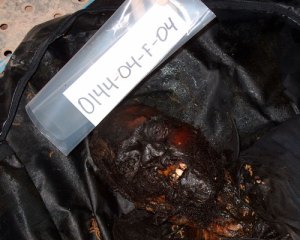
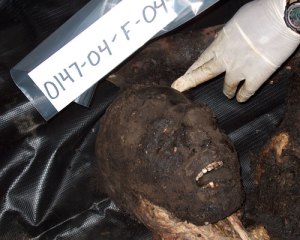
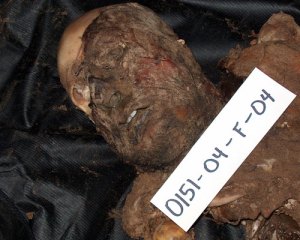

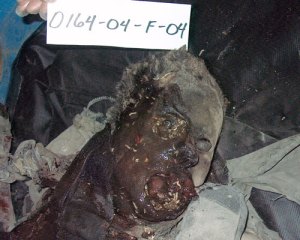

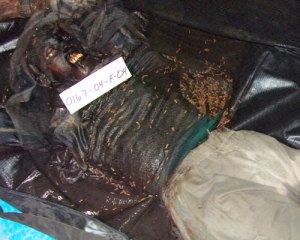
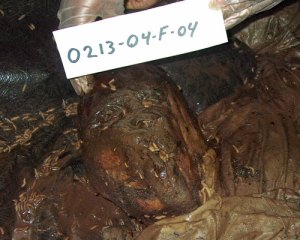


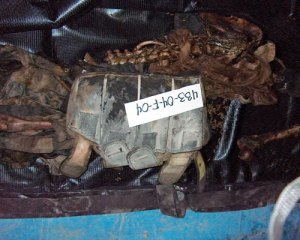

 On September 22, Mohammad Othman was arrested and detained by Israeli soldiers on the Allenby Bridge Crossing, the border from Jordan to Palestine. He was returning from a trip to Norway, where he was advocating for Palestinian human rights. Ask U.S. President Obama to press for his immediate release.
On September 22, Mohammad Othman was arrested and detained by Israeli soldiers on the Allenby Bridge Crossing, the border from Jordan to Palestine. He was returning from a trip to Norway, where he was advocating for Palestinian human rights. Ask U.S. President Obama to press for his immediate release.
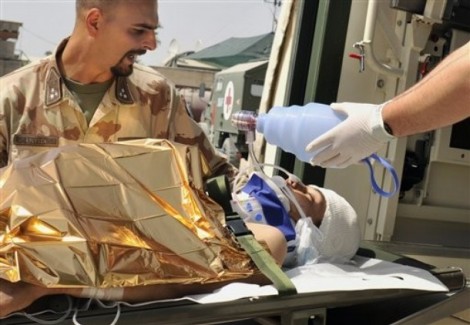 Hungarian ISAF medics treat a wounded Afghan policeman at the Hungarian military base in Pul-e-Khumri, Baghlan province of Afghanistan, Saturday, July 11, 2009. Afghan police clashed with pro-Taliban fighters in the near by Baghlan Jalid Friday night. (AP Photo/Bela Szandelszky)
Hungarian ISAF medics treat a wounded Afghan policeman at the Hungarian military base in Pul-e-Khumri, Baghlan province of Afghanistan, Saturday, July 11, 2009. Afghan police clashed with pro-Taliban fighters in the near by Baghlan Jalid Friday night. (AP Photo/Bela Szandelszky)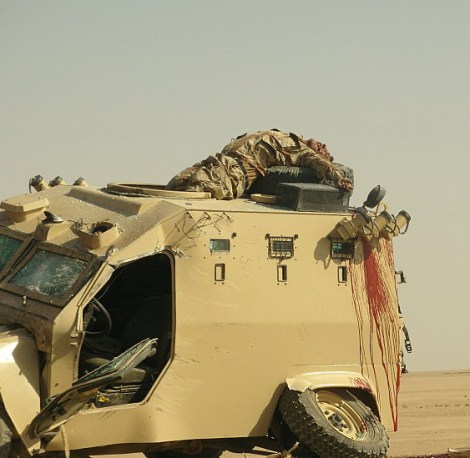
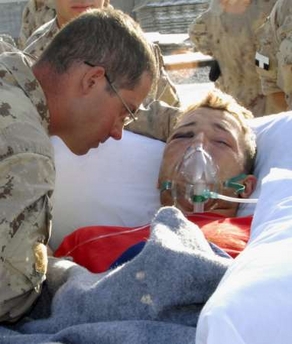
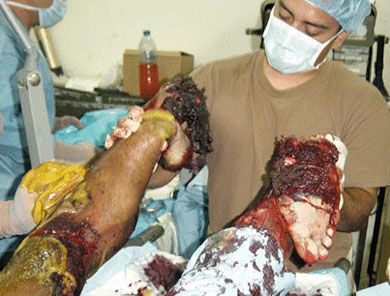
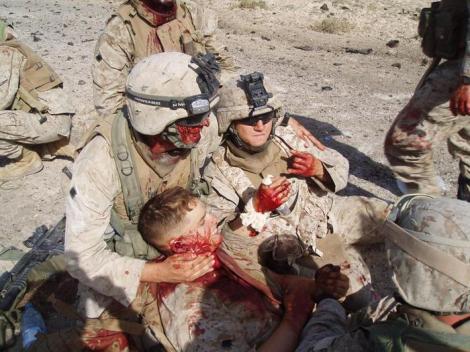
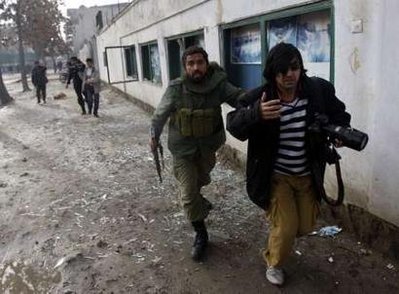
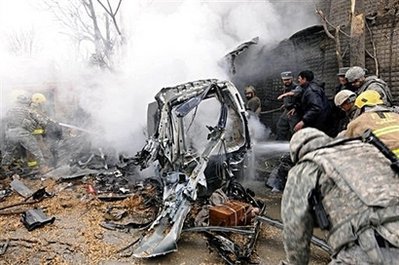
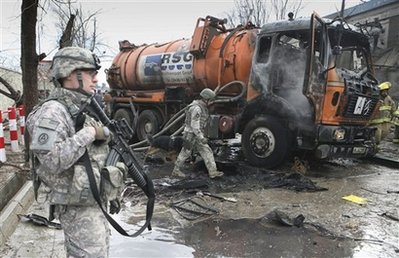 A U.S. soldier stands guard as a snuffer dog checks following a blast in Kabul, Afghanistan, on Saturday, Jan. 17, 2009. A suicide car bomb attack on a heavily guarded road between the German Embassy and a U.S. military base. (AP Photo/Rafiq Maqbool)
A U.S. soldier stands guard as a snuffer dog checks following a blast in Kabul, Afghanistan, on Saturday, Jan. 17, 2009. A suicide car bomb attack on a heavily guarded road between the German Embassy and a U.S. military base. (AP Photo/Rafiq Maqbool)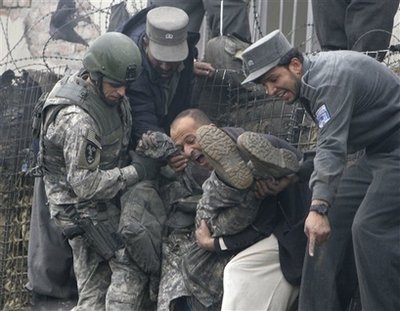 An injured U.S. soldier is helped getting out following a blast in Kabul, Afghanistan, Saturday, Jan. 17, 2009. A suicide car bomb attack Saturday on a heavily guarded road between the German Embassy and a U.S. military base. (AP Photo/Musadeq Sadeq)
An injured U.S. soldier is helped getting out following a blast in Kabul, Afghanistan, Saturday, Jan. 17, 2009. A suicide car bomb attack Saturday on a heavily guarded road between the German Embassy and a U.S. military base. (AP Photo/Musadeq Sadeq)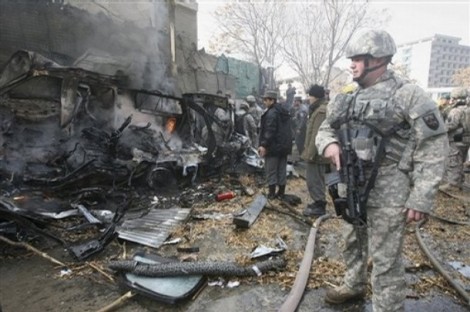 A U.S. soldier stands guard following a blast in Kabul, Afghanistan, on Saturday, Jan. 17, 2009. A suicide car bomb attack on a heavily guarded road between the German Embassy and a U.S. military base . (AP Photo/Musadeq Sadeq)
A U.S. soldier stands guard following a blast in Kabul, Afghanistan, on Saturday, Jan. 17, 2009. A suicide car bomb attack on a heavily guarded road between the German Embassy and a U.S. military base . (AP Photo/Musadeq Sadeq)
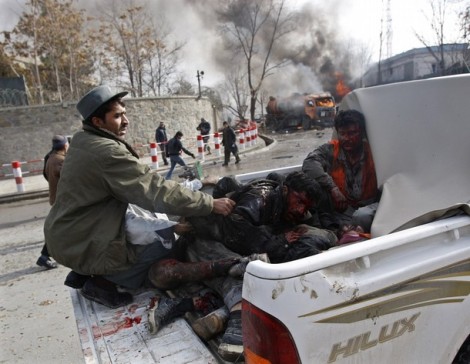 Victims of a blast at the German embassy are driven to a hospital in the back of a truck in Kabul January 17, 2009. A suicide car bomb exploded outside the embassy and a U.S. base in the Afghan capital on Saturday, killing three civilians, witnesses said. REUTERS/Ahmad Masood
Victims of a blast at the German embassy are driven to a hospital in the back of a truck in Kabul January 17, 2009. A suicide car bomb exploded outside the embassy and a U.S. base in the Afghan capital on Saturday, killing three civilians, witnesses said. REUTERS/Ahmad Masood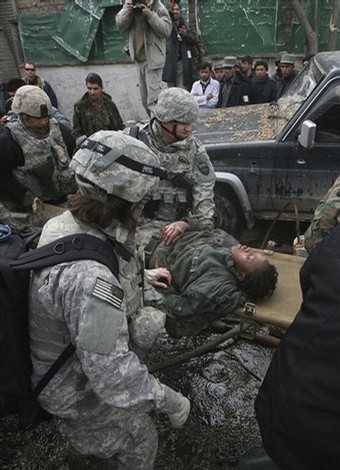 A wounded U.S. soldier is carried following a blast in Kabul, Afghanistan, on Saturday, Jan. 17, 2009. A suicide car bomb attack on a heavily guarded road between the German Embassy and a U.S. military base set the embassy on fire Saturday, killing an Afghan child and wounding 21 people, including five U.S. troops. (AP Photo/Musadeq Sadeq)
A wounded U.S. soldier is carried following a blast in Kabul, Afghanistan, on Saturday, Jan. 17, 2009. A suicide car bomb attack on a heavily guarded road between the German Embassy and a U.S. military base set the embassy on fire Saturday, killing an Afghan child and wounding 21 people, including five U.S. troops. (AP Photo/Musadeq Sadeq)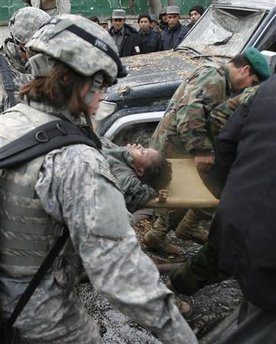 People carry a wounded U.S. soldier after a blast outside the German embassy in Kabul January 17, 2009. A suicide car bomb exploded outside the embassy and a U.S. base in the Afghan capital of Kabul on Saturday, killing three civilians, witnesses said. REUTERS/Omar Sobhani
People carry a wounded U.S. soldier after a blast outside the German embassy in Kabul January 17, 2009. A suicide car bomb exploded outside the embassy and a U.S. base in the Afghan capital of Kabul on Saturday, killing three civilians, witnesses said. REUTERS/Omar Sobhani
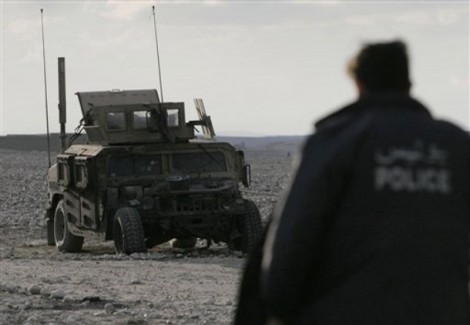 An Afghan officer walks towards a damaged U.S. Humvee armored vehicle after a car bomb suicide attack in Basoud district of Ningarhar province east of Kabul, Afghanistan, on Thursday, Feb. 5, 2009. The blast left no causalities, said Afghan police officials. (AP Photo/Rahmat Gul)
An Afghan officer walks towards a damaged U.S. Humvee armored vehicle after a car bomb suicide attack in Basoud district of Ningarhar province east of Kabul, Afghanistan, on Thursday, Feb. 5, 2009. The blast left no causalities, said Afghan police officials. (AP Photo/Rahmat Gul)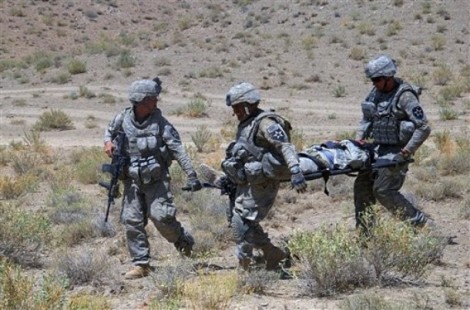 In this handout image released by U.S. army, Infantry Soldiers from 4th Battalion, 23rd Infantry Regiment, 5th Stryker Brigade Combat Team carry a wounded Stryker Soldier on a litter to be medically evacuated (MEDEVAC) after rolling over an anti-tank mine in Zabul Province, Afghanistan, Friday, Aug 21, 2009. The MEDEVAC support team based near the same province is from Company C “DUSTOFF”, 82nd Combat Aviation Brigade. The team was able to respond to the evacuation of the Soldier within 15 minutes of the incident. The Soldier suffered minor injuries to his back.(AP Photo/US Army)
In this handout image released by U.S. army, Infantry Soldiers from 4th Battalion, 23rd Infantry Regiment, 5th Stryker Brigade Combat Team carry a wounded Stryker Soldier on a litter to be medically evacuated (MEDEVAC) after rolling over an anti-tank mine in Zabul Province, Afghanistan, Friday, Aug 21, 2009. The MEDEVAC support team based near the same province is from Company C “DUSTOFF”, 82nd Combat Aviation Brigade. The team was able to respond to the evacuation of the Soldier within 15 minutes of the incident. The Soldier suffered minor injuries to his back.(AP Photo/US Army)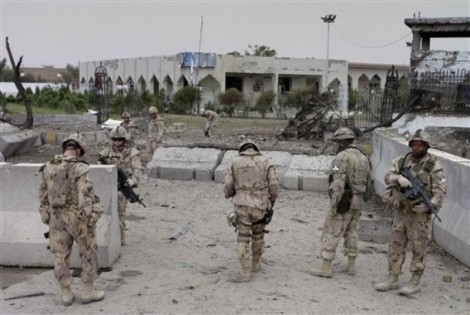 Canadian soldiers with the International Security Assistance Force (ISAF) stand outside the provincial council office following suicide attacks in Kandahar province, south of Kabul, Afghanistan on Wednesday, April 1, 2009. Three Taliban suicide bombers disguised in army uniforms stormed a government office in southern Afghanistan on Wednesday after a fourth detonated a car bomb, officials said. At least 17 people, including the four assailants, died. (AP Photo)
Canadian soldiers with the International Security Assistance Force (ISAF) stand outside the provincial council office following suicide attacks in Kandahar province, south of Kabul, Afghanistan on Wednesday, April 1, 2009. Three Taliban suicide bombers disguised in army uniforms stormed a government office in southern Afghanistan on Wednesday after a fourth detonated a car bomb, officials said. At least 17 people, including the four assailants, died. (AP Photo)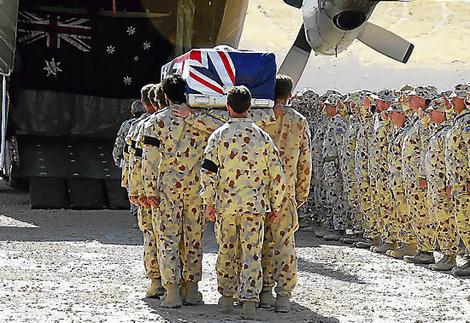 British Soldiers grieving their fallen comrade
British Soldiers grieving their fallen comrade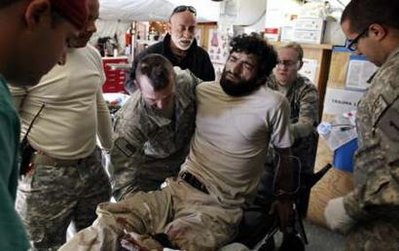
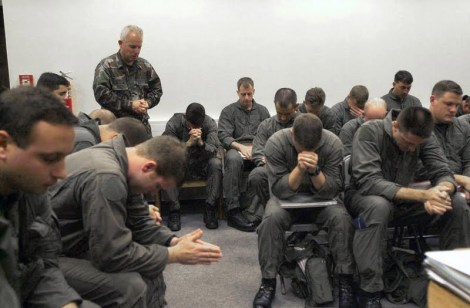
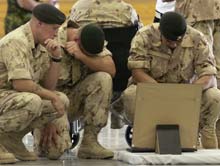
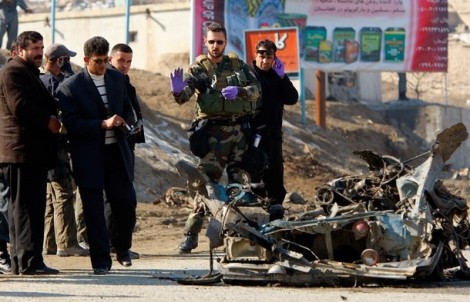 KABUL, AFGHANISTAN -February 01: Afghan and ISAF (International Security Assistance Force) troops examine the scene after a suicide car bomber hit a convoy of foreign troops on the outskirts of the Afghan capital, wounding two Afghan civilians and a French soldier, according to Afghan officials, February 1, 2009 in Kabul, Afghanistan. The Independent Election Commission has postponed the country’s presidential election until August 20th, from late April, for security reasons. (Photo by Paula Bronstein/Getty Images)
KABUL, AFGHANISTAN -February 01: Afghan and ISAF (International Security Assistance Force) troops examine the scene after a suicide car bomber hit a convoy of foreign troops on the outskirts of the Afghan capital, wounding two Afghan civilians and a French soldier, according to Afghan officials, February 1, 2009 in Kabul, Afghanistan. The Independent Election Commission has postponed the country’s presidential election until August 20th, from late April, for security reasons. (Photo by Paula Bronstein/Getty Images)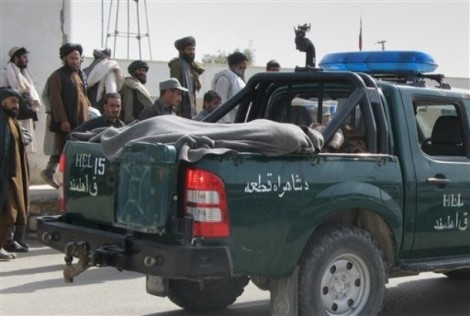 The wrapped body parts of a lawmaker Dad Mohammad Khan and others who were with him are seen in a blanket on the back of a police vehicle following a roadside bomb in Helmand province south of Kabul, Afghanistan on Thursday, March 19, 2009. The lawmaker who was a vocal Taliban critic in Afghanistan’s insurgency-plagued south was killed Thursday by a roadside bomb, family and officials said. (AP Photo)
The wrapped body parts of a lawmaker Dad Mohammad Khan and others who were with him are seen in a blanket on the back of a police vehicle following a roadside bomb in Helmand province south of Kabul, Afghanistan on Thursday, March 19, 2009. The lawmaker who was a vocal Taliban critic in Afghanistan’s insurgency-plagued south was killed Thursday by a roadside bomb, family and officials said. (AP Photo)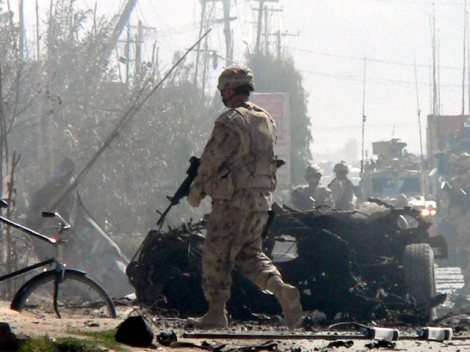 Canadian soldiers of NATO-led International Security Assistance Force (ISAF) inspect the wreckage of a vehicle used in a suicide car bomb attack targeting a Canadian military convoy in Kandahar, southern Afghanistan, 12 March 2008. A suicide attacker detonated his explosives-filled vehicle targeted at a Canadian military convoy killing an Afghan civilian and wounding four others, including a Canadian soldier, officials said. Around 2, 500 Canadian forces are stationed in the southern province of Kandahar, a strong-hold for Taliban militants, whose government was toppled in late 2001. EPA/HUMAYOUN SHIAB
Canadian soldiers of NATO-led International Security Assistance Force (ISAF) inspect the wreckage of a vehicle used in a suicide car bomb attack targeting a Canadian military convoy in Kandahar, southern Afghanistan, 12 March 2008. A suicide attacker detonated his explosives-filled vehicle targeted at a Canadian military convoy killing an Afghan civilian and wounding four others, including a Canadian soldier, officials said. Around 2, 500 Canadian forces are stationed in the southern province of Kandahar, a strong-hold for Taliban militants, whose government was toppled in late 2001. EPA/HUMAYOUN SHIAB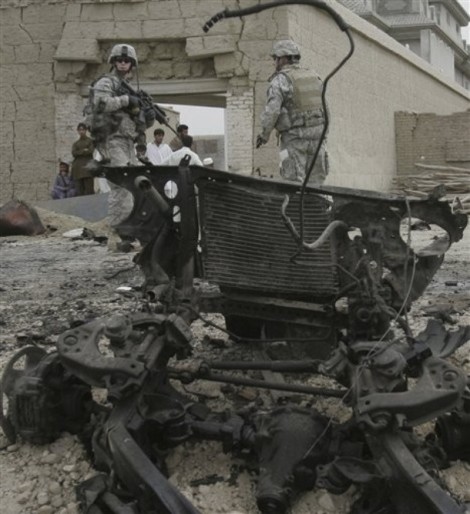
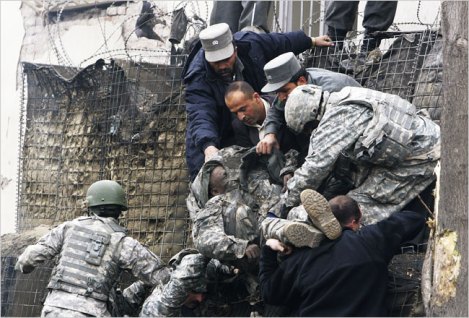
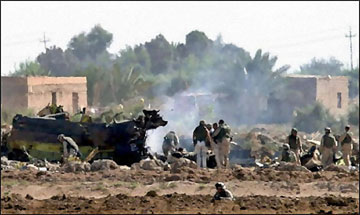
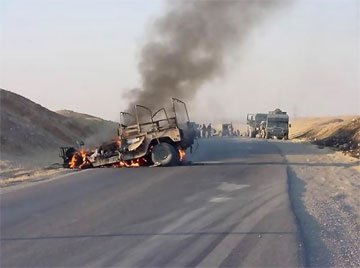
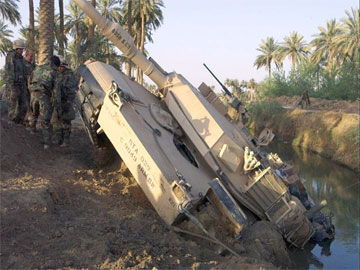
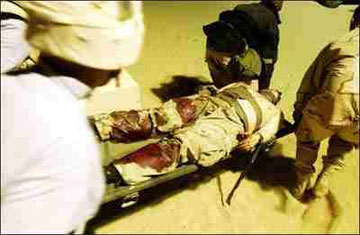

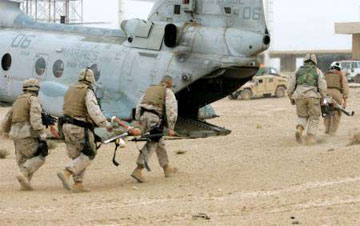
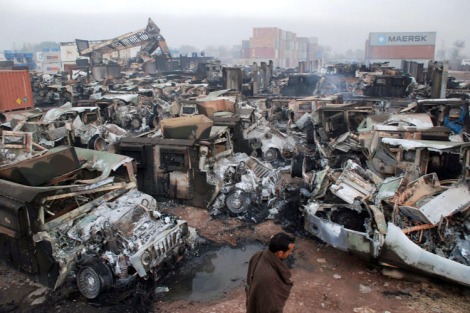
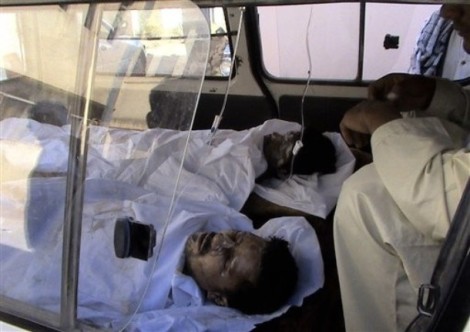 Injured people by a NATO airstrike are brought to a hospital in Kunduz, Afghanistan, Friday, Sept. 4, 2009. (AP Photo)
Injured people by a NATO airstrike are brought to a hospital in Kunduz, Afghanistan, Friday, Sept. 4, 2009. (AP Photo)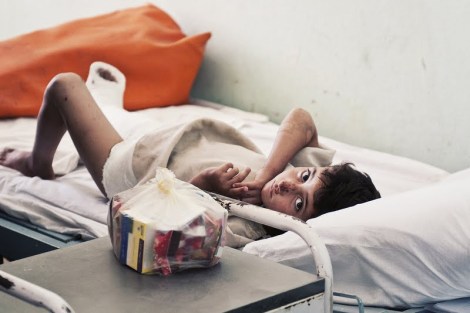 September 7 2009 Child being treated in hospital.
September 7 2009 Child being treated in hospital.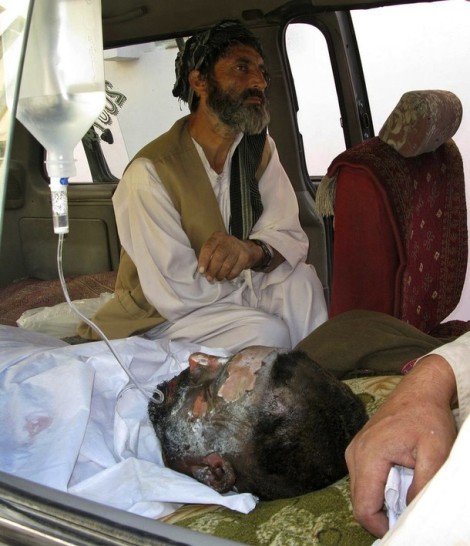 A wounded man is transported in a taxi to a hospital after an airstrike killed scores of people in Kunduz September 4, 2009. REUTERS/Wahdat
A wounded man is transported in a taxi to a hospital after an airstrike killed scores of people in Kunduz September 4, 2009. REUTERS/Wahdat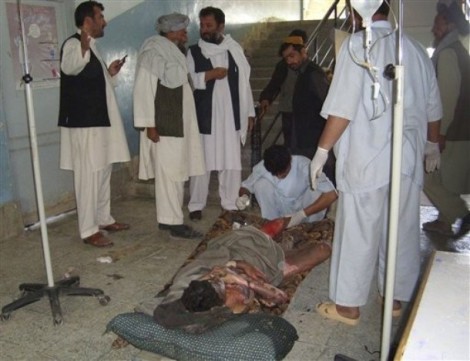 A Doctor treats an injured full of burns, of NATO air strike, at a hospital, in Kunduz, Afghanistan, Friday, Sept. 4, 2009. (AP Photo)
A Doctor treats an injured full of burns, of NATO air strike, at a hospital, in Kunduz, Afghanistan, Friday, Sept. 4, 2009. (AP Photo)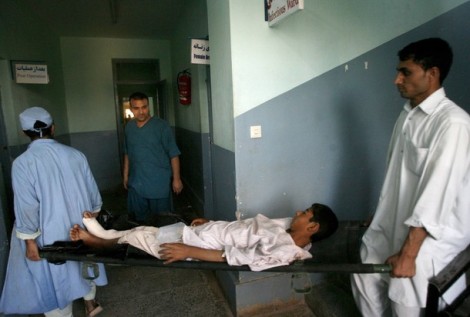 Afghan hospital workers carry an injured Afghan villager in hospital after Friday’s NATO air strike in northern Kunduz September 4, 2009. REUTERS/Omar Sobhani
Afghan hospital workers carry an injured Afghan villager in hospital after Friday’s NATO air strike in northern Kunduz September 4, 2009. REUTERS/Omar Sobhani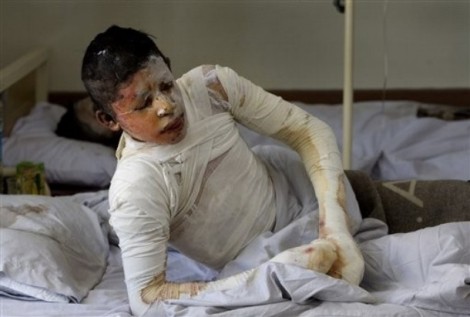 Rahmatullah, 19, a victim of Friday’ NATO air strike, tries to sit up on his bed in a hospital in Kabul, Afghanistan, Saturday, Sept. 5, 2009. (AP Photo/Manish Swarup)
Rahmatullah, 19, a victim of Friday’ NATO air strike, tries to sit up on his bed in a hospital in Kabul, Afghanistan, Saturday, Sept. 5, 2009. (AP Photo/Manish Swarup)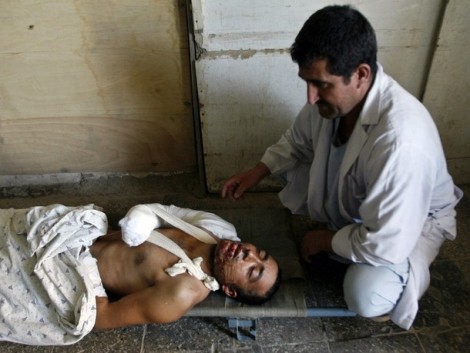 An Afghan doctor in a regional hospital treats a villager injured in Friday’s NATO air strike in northern Kunduz September 4, 2009. REUTERS/Omar Sobhani
An Afghan doctor in a regional hospital treats a villager injured in Friday’s NATO air strike in northern Kunduz September 4, 2009. REUTERS/Omar Sobhani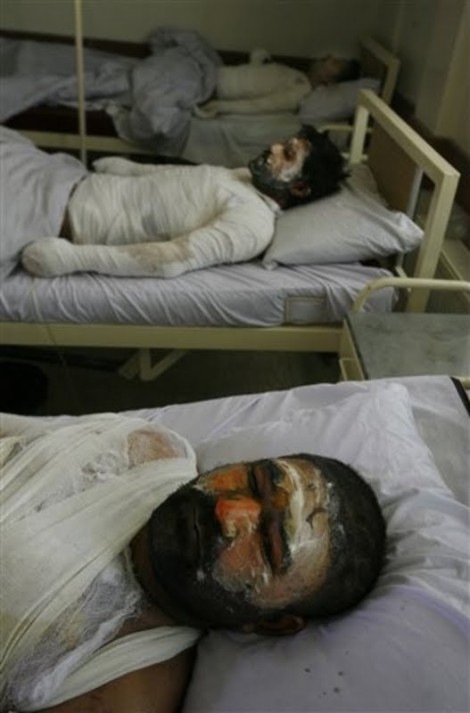
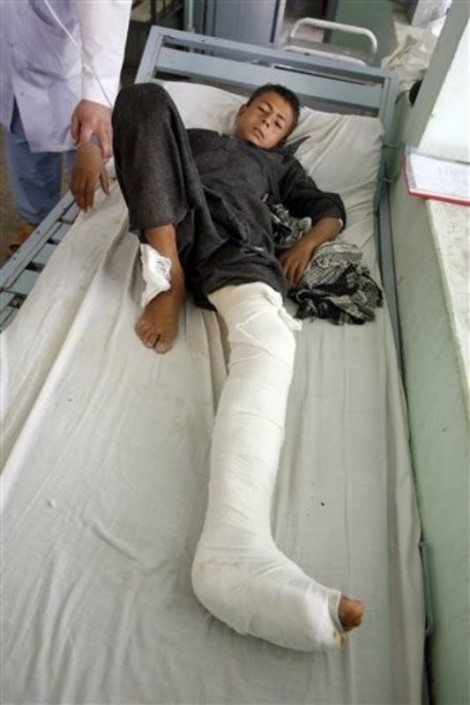
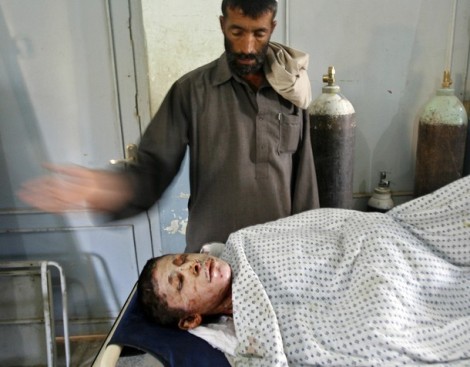 An Afghan villager injured lies in hospital after Friday’s NATO air strike on a Taliban target in northern Kunduz September 4, 2009.
An Afghan villager injured lies in hospital after Friday’s NATO air strike on a Taliban target in northern Kunduz September 4, 2009.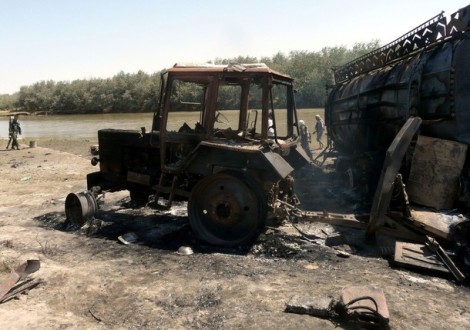 Afghan police inspect the site of an airstrike in Kunduz September 4, 2009. NATO aircraft opened fire on hijacked fuel trucks in Afghanistan before dawn on Friday. REUTERS/Wahdat
Afghan police inspect the site of an airstrike in Kunduz September 4, 2009. NATO aircraft opened fire on hijacked fuel trucks in Afghanistan before dawn on Friday. REUTERS/Wahdat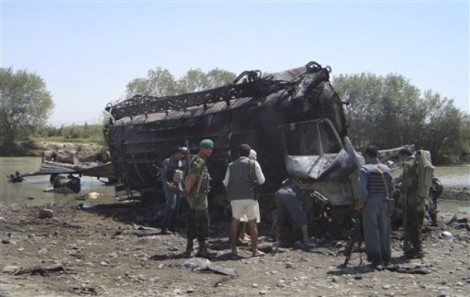 Afghani policemen look at one of two burnt fuel tankers, near Kunduz, Afghanistan, Friday, Sept. 4, 2009.
Afghani policemen look at one of two burnt fuel tankers, near Kunduz, Afghanistan, Friday, Sept. 4, 2009.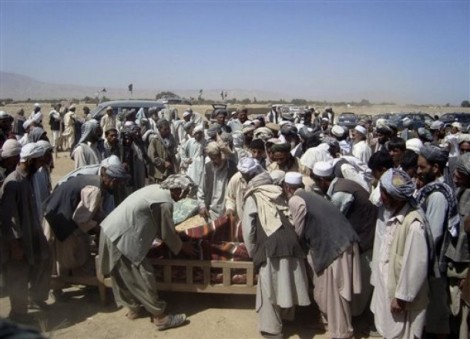
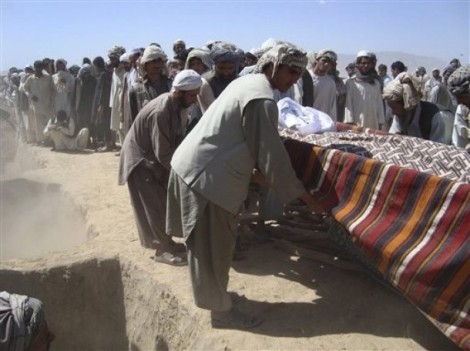
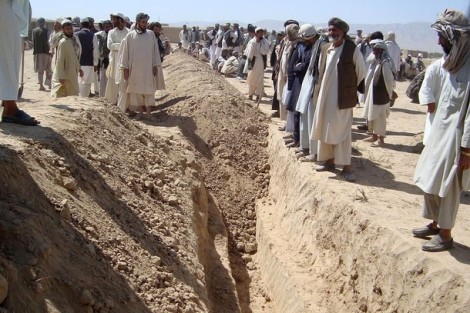 Afghans bury some of the victims of an airstrike in a mass grave near Kunduz September 4, 2009.setting off a huge fireball Friday that killed up to 90 people on Friday in northern Afghanistan when NATO aircraft struck hijacked fuel tankers as villagers came to collect fuel, Afghan officials said. REUTERS/Stringer
Afghans bury some of the victims of an airstrike in a mass grave near Kunduz September 4, 2009.setting off a huge fireball Friday that killed up to 90 people on Friday in northern Afghanistan when NATO aircraft struck hijacked fuel tankers as villagers came to collect fuel, Afghan officials said. REUTERS/Stringer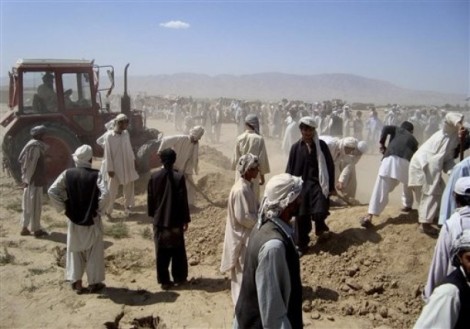 Local Afghani people bury their villagers killed in a NATO air strike, in a mass grave near Kunduz, Afghanistan, Friday, Sept. 4, 2009. (AP Photo)
Local Afghani people bury their villagers killed in a NATO air strike, in a mass grave near Kunduz, Afghanistan, Friday, Sept. 4, 2009. (AP Photo) Local Afghani people burry their villagers killed in a NATO airstrike, in a mass grave near Kunduz, Afghanistan, Friday, Sept. 4, 2009. (AP Photo)
Local Afghani people burry their villagers killed in a NATO airstrike, in a mass grave near Kunduz, Afghanistan, Friday, Sept. 4, 2009. (AP Photo)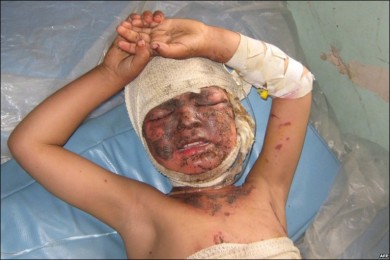
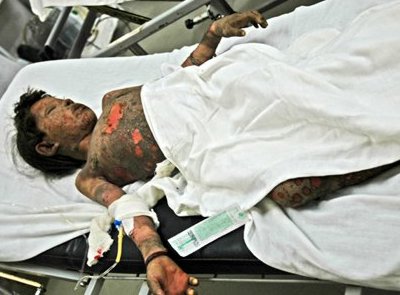
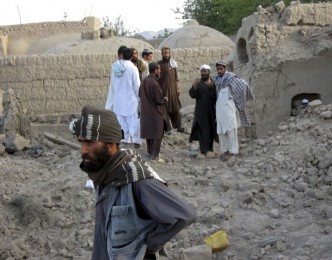
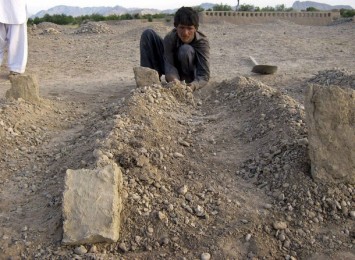
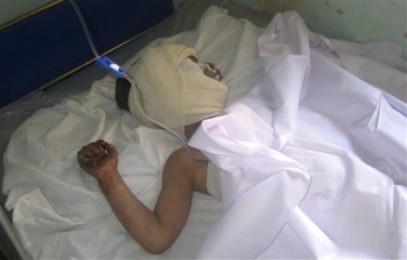
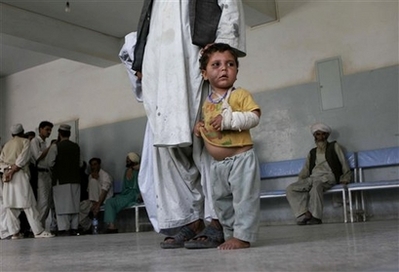 An Afghan child, who was wounded by coalition airstrikes in the Zerko area of Shindand district stands with his father at a hospital in the city of Herat province southwest of Kabul, Afghanistan on Thursday, July 17, 2008. (AP Photo/Fraidoon Pooyaa)
An Afghan child, who was wounded by coalition airstrikes in the Zerko area of Shindand district stands with his father at a hospital in the city of Herat province southwest of Kabul, Afghanistan on Thursday, July 17, 2008. (AP Photo/Fraidoon Pooyaa)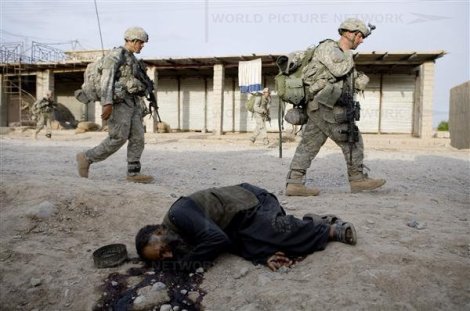
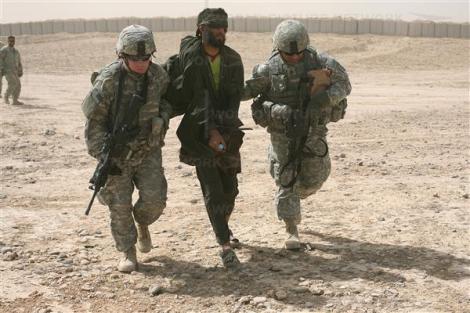 Two American soldiers are escorted a detainee in fob Robinson who is going to be flown back to Kandahar base in a Chinook for further questioning.
Two American soldiers are escorted a detainee in fob Robinson who is going to be flown back to Kandahar base in a Chinook for further questioning.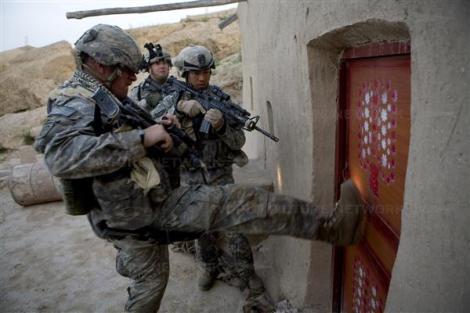 Private Dan Burris of the 82nd Airborne’s 1/508 Parachute Infantry Regiment, Alpha Company, Third Platoon kicks in a door after staging a nighttime air assault into Sangin, Helmand province, the largest air assault in Afghanistan since the beginning of the war, on Thursday, April 5, 2007.
Private Dan Burris of the 82nd Airborne’s 1/508 Parachute Infantry Regiment, Alpha Company, Third Platoon kicks in a door after staging a nighttime air assault into Sangin, Helmand province, the largest air assault in Afghanistan since the beginning of the war, on Thursday, April 5, 2007.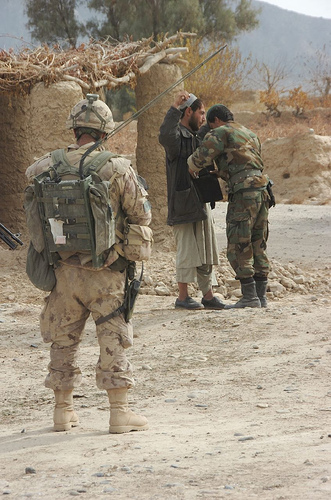
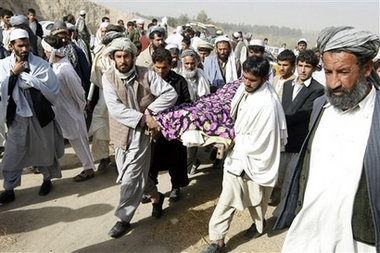
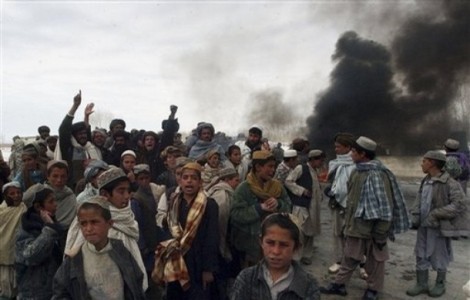 Afghan demonstrators gather at a demonstration as black smoke billows from burning tires in the background, following a U.S. operation on their village in Qarabagh district of Ghazni, west of Kabul, Afghanistan, Monday, Feb. 2, 2009. (AP Photo/Rahmatullah Naikzad)
Afghan demonstrators gather at a demonstration as black smoke billows from burning tires in the background, following a U.S. operation on their village in Qarabagh district of Ghazni, west of Kabul, Afghanistan, Monday, Feb. 2, 2009. (AP Photo/Rahmatullah Naikzad)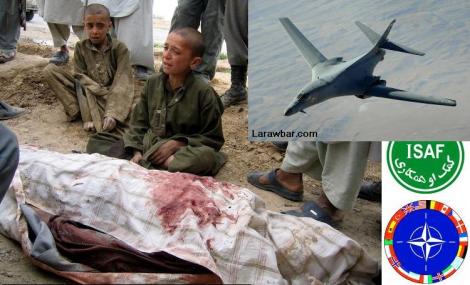
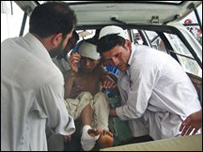
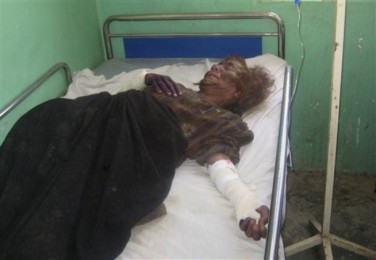
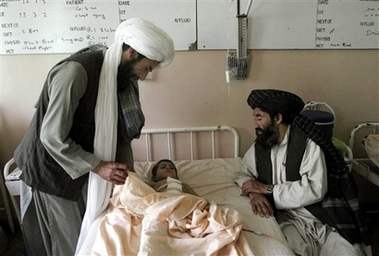 Afghan men surround a child who was wounded by air strikes as he lays in a hospital after he was transported from Helmand to Kandahar province for treatment on Saturday, July 28, 2007. (AP Photo/Allauddin Khan)
Afghan men surround a child who was wounded by air strikes as he lays in a hospital after he was transported from Helmand to Kandahar province for treatment on Saturday, July 28, 2007. (AP Photo/Allauddin Khan)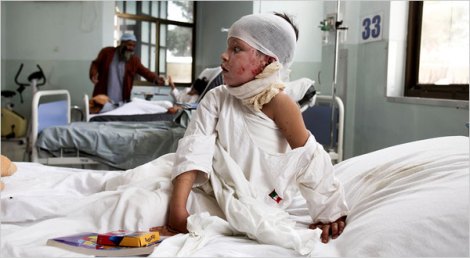
 Afghan boy in Aasad Abad
Afghan boy in Aasad Abad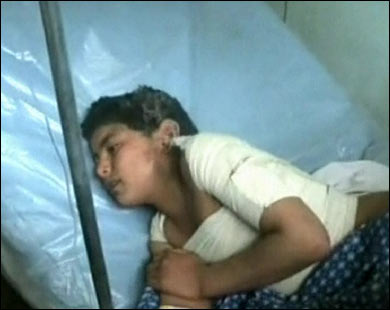

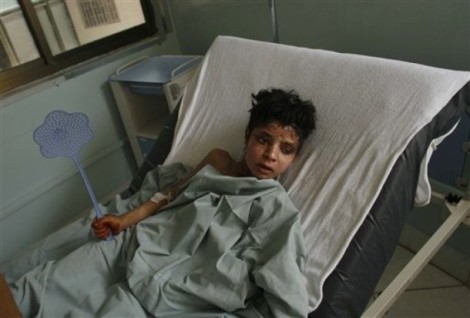 Tala 9, an Afghan girl who was wounded in coalition air strike on Monday night in Bala Baluk district of Farah province recovers in a hospital in Herat, Afghanistan, Saturday, May 9, 2009. A joint U.S.-Afghan investigation has found that civilians were killed during a battle in southern Afghanistan, but officials have not been able to determine how many.(AP Photo/Fraidoon Pooyaa)
Tala 9, an Afghan girl who was wounded in coalition air strike on Monday night in Bala Baluk district of Farah province recovers in a hospital in Herat, Afghanistan, Saturday, May 9, 2009. A joint U.S.-Afghan investigation has found that civilians were killed during a battle in southern Afghanistan, but officials have not been able to determine how many.(AP Photo/Fraidoon Pooyaa)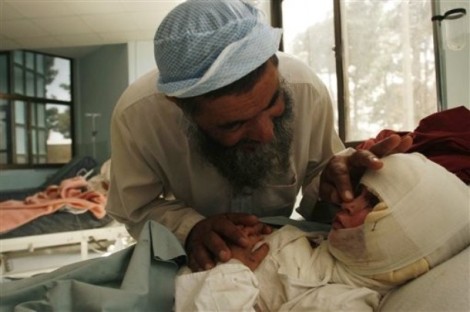 Haji Barkat Ullah speaks with her daughter Frishta, 7, who was wounded in coalition air strike on Monday night in Bala Baluk district of Farah province recovers in a hospital in Herat, Afghanistan, Saturday, May 9, 2009. A joint U.S.-Afghan investigation has found that civilians were killed during a battle in southern Afghanistan, but officials have not been able to determine how many. (AP Photo/Fraidoon Pooyaa)
Haji Barkat Ullah speaks with her daughter Frishta, 7, who was wounded in coalition air strike on Monday night in Bala Baluk district of Farah province recovers in a hospital in Herat, Afghanistan, Saturday, May 9, 2009. A joint U.S.-Afghan investigation has found that civilians were killed during a battle in southern Afghanistan, but officials have not been able to determine how many. (AP Photo/Fraidoon Pooyaa)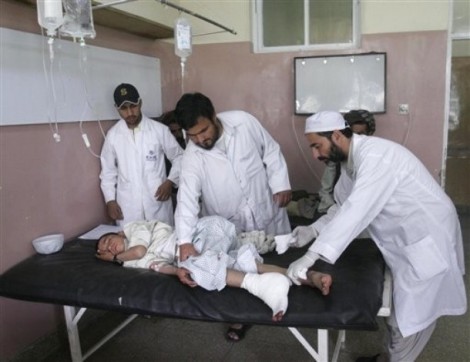 Afghan paramedics treat a wounded Afghan boy in a hospital after he was wounded in a roadside bomb in Kandahar, Afghanistan, Saturday, April 18, 2009. A roadside bomb targeting a police vehicle in Kandahar city killed a woman and wounded five other people including three civilians, said Abdullah Khan, the provincial deputy police chief.(AP Photo/Allauddin Khan)
Afghan paramedics treat a wounded Afghan boy in a hospital after he was wounded in a roadside bomb in Kandahar, Afghanistan, Saturday, April 18, 2009. A roadside bomb targeting a police vehicle in Kandahar city killed a woman and wounded five other people including three civilians, said Abdullah Khan, the provincial deputy police chief.(AP Photo/Allauddin Khan)
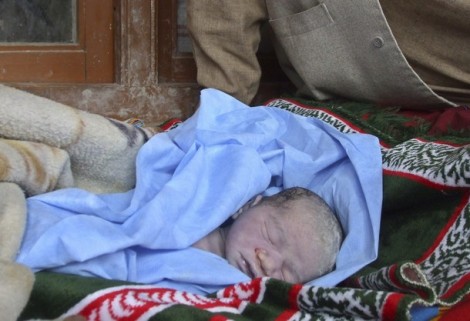 The body of an infant boy who died after a military raid is seen in a village in Gurbuz district of Khost province April 9, 2009. U.S. and Afghan forces killed four militants, including two women, and detained three others on Wednesday near Khost city, some 150 km (95 miles) southeast of Kabul, U.S. forces said in a statement. But local residents disputed the military’s account, saying five civilians, a female teacher, her son, brother in-law and two more non-combatants were killed in the raid. Another woman was wounded, they said. REUTERS/Kamal Sadat
The body of an infant boy who died after a military raid is seen in a village in Gurbuz district of Khost province April 9, 2009. U.S. and Afghan forces killed four militants, including two women, and detained three others on Wednesday near Khost city, some 150 km (95 miles) southeast of Kabul, U.S. forces said in a statement. But local residents disputed the military’s account, saying five civilians, a female teacher, her son, brother in-law and two more non-combatants were killed in the raid. Another woman was wounded, they said. REUTERS/Kamal Sadat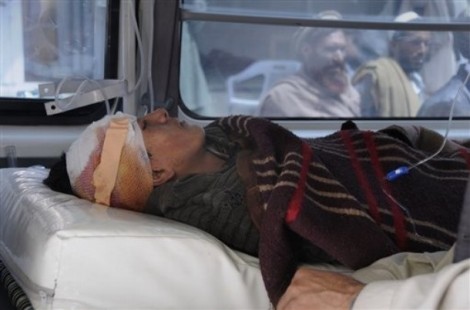
 Afghan villagers pray opposite the bodies of victims of an earthquake, during a funeral in Sherzad district, Nangarhar province, east of Kabul, Afghanistan, Friday, April 17, 2009. Two earthquakes shook eastern Afghanistan early Friday, collapsing mud-brick homes on top of villagers while they slept and killing at least 21 people. (AP Photo/Rahmat Gul)
Afghan villagers pray opposite the bodies of victims of an earthquake, during a funeral in Sherzad district, Nangarhar province, east of Kabul, Afghanistan, Friday, April 17, 2009. Two earthquakes shook eastern Afghanistan early Friday, collapsing mud-brick homes on top of villagers while they slept and killing at least 21 people. (AP Photo/Rahmat Gul)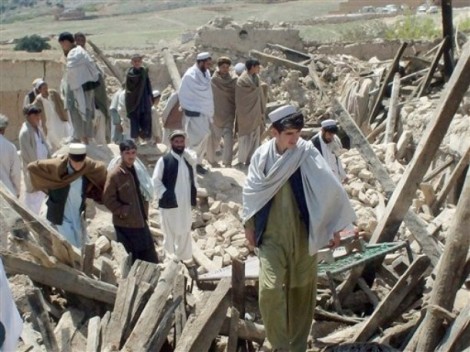
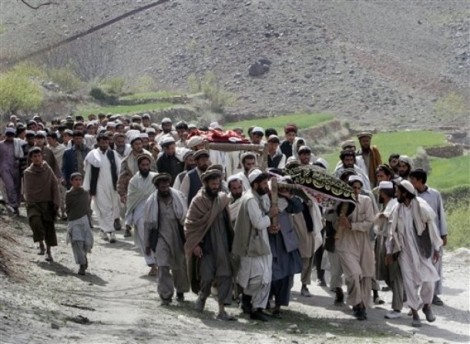
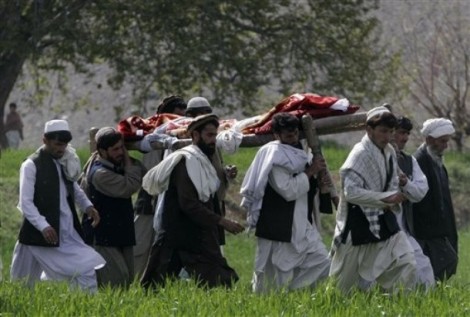
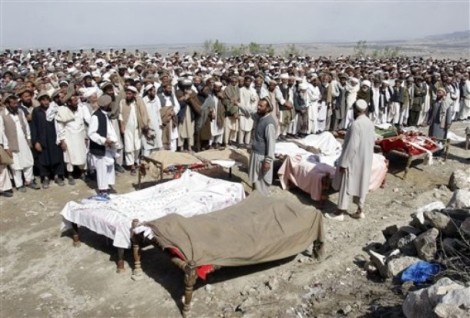
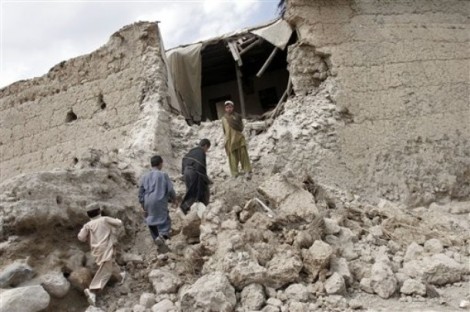
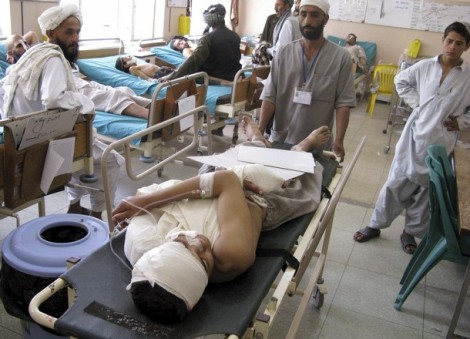
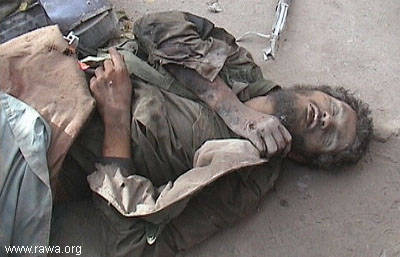
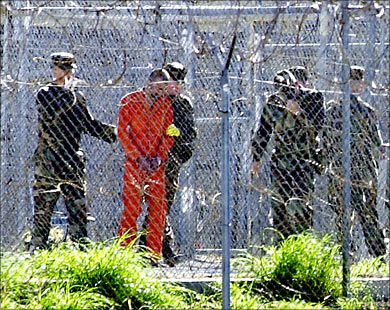
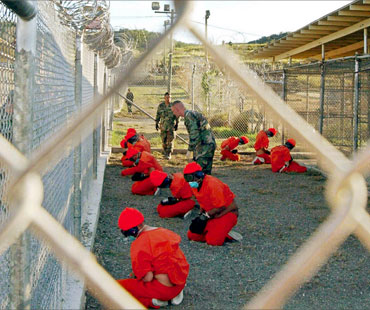
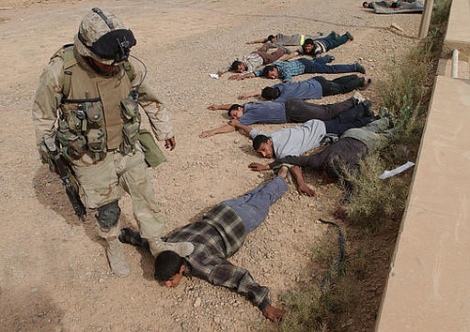
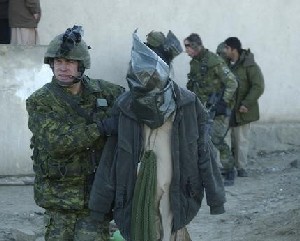

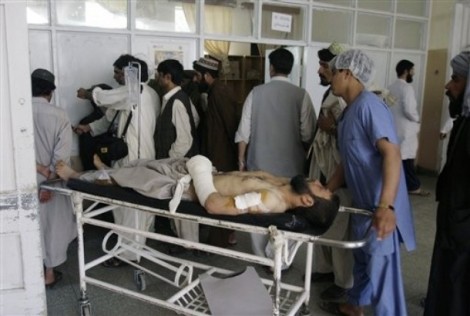
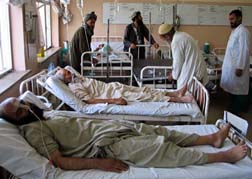
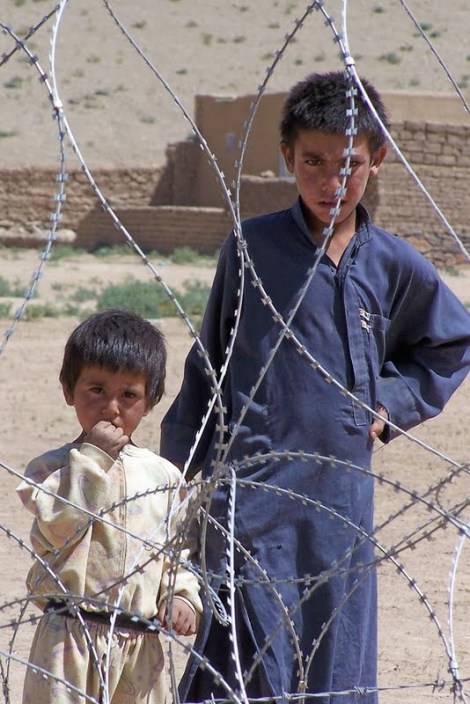
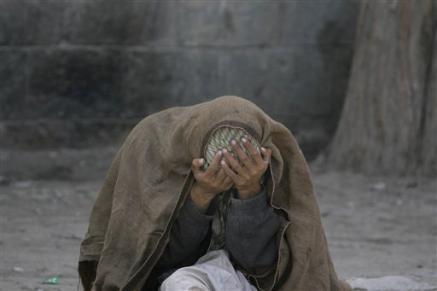
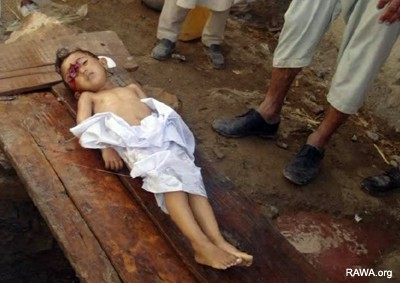
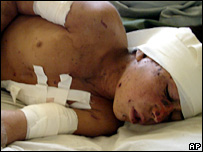

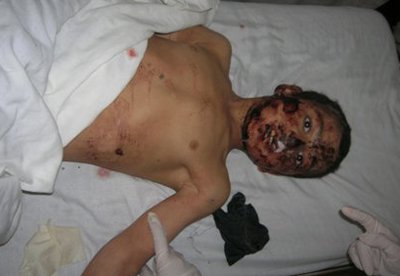

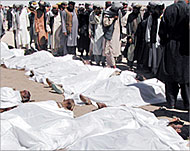
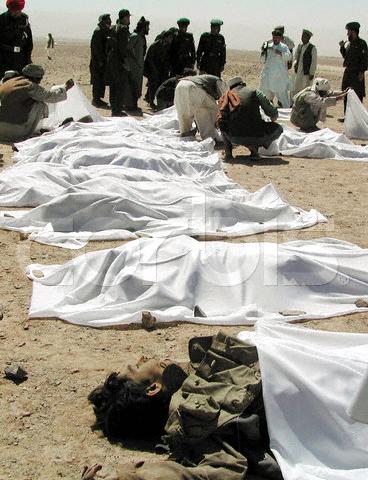
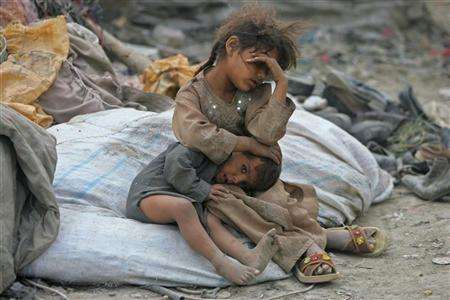

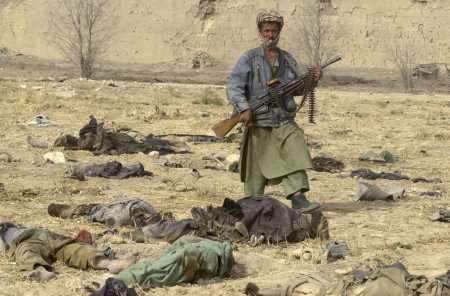
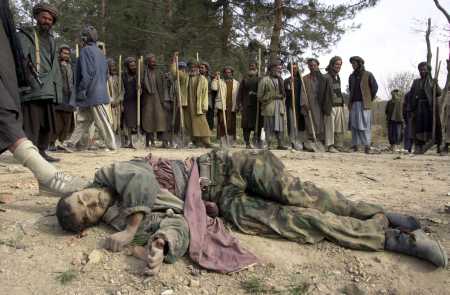
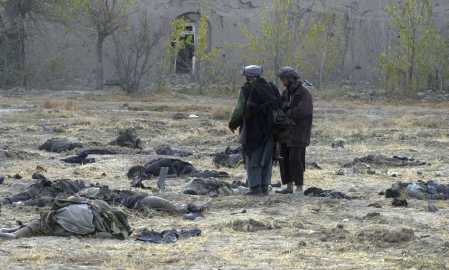
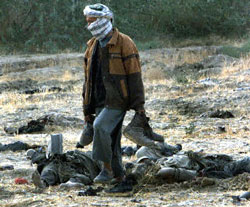
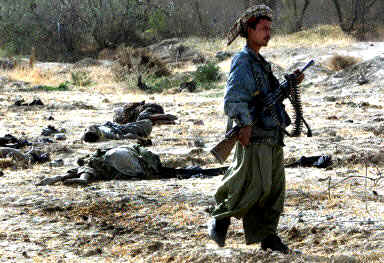
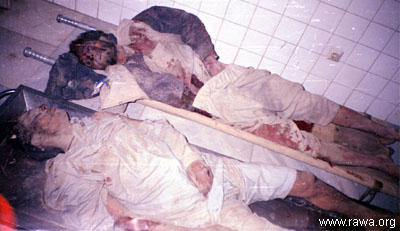

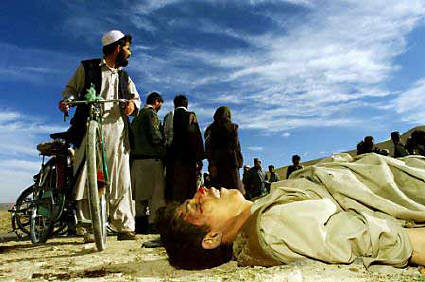


 Recent revelations illustrating the fact that the U.S. government is using a Sunni Al-Qaeda terrorist group formerly headed by the alleged mastermind of 9/11 to carry out bombings in Iran undermines the entire war on terror as a monumental hoax that is being exploited purely to realize a geopolitical agenda.
Recent revelations illustrating the fact that the U.S. government is using a Sunni Al-Qaeda terrorist group formerly headed by the alleged mastermind of 9/11 to carry out bombings in Iran undermines the entire war on terror as a monumental hoax that is being exploited purely to realize a geopolitical agenda.












 Athens: A woman walks in front of burning barricades during riots after a rally
Athens: A woman walks in front of burning barricades during riots after a rally

































